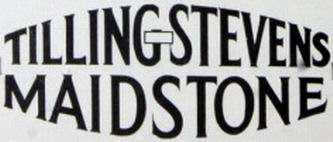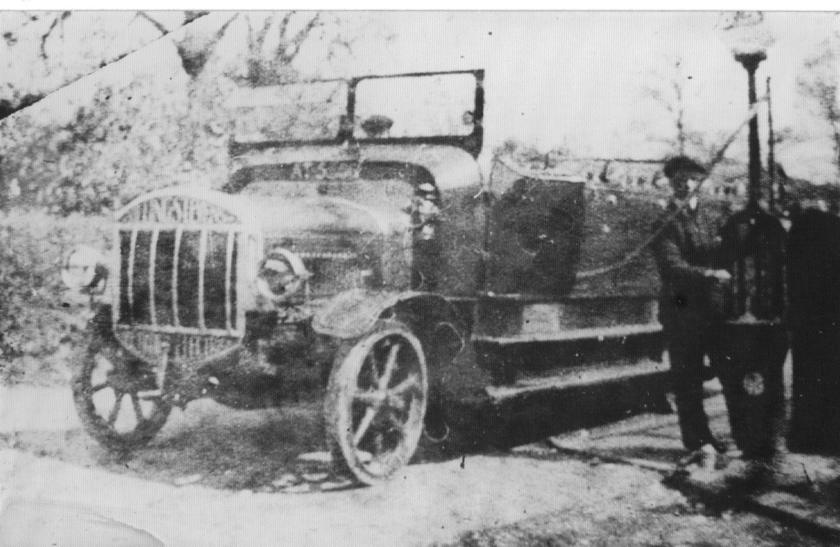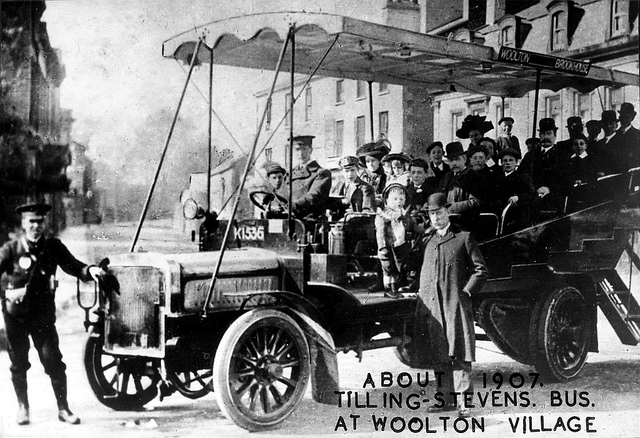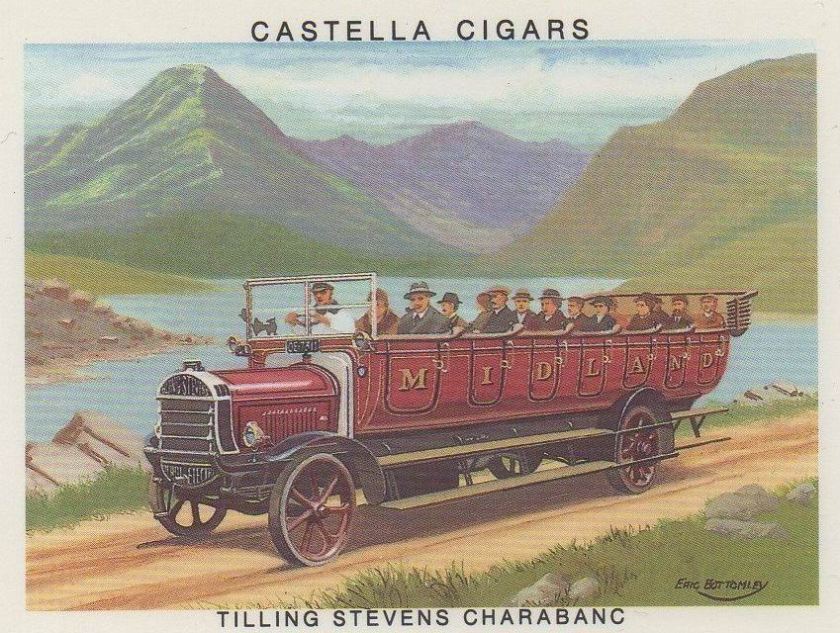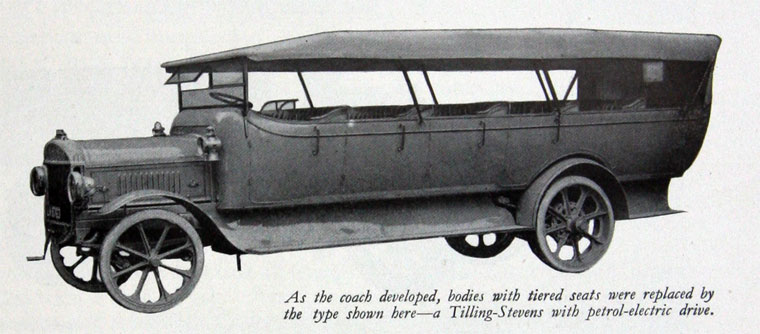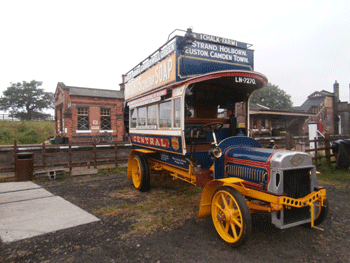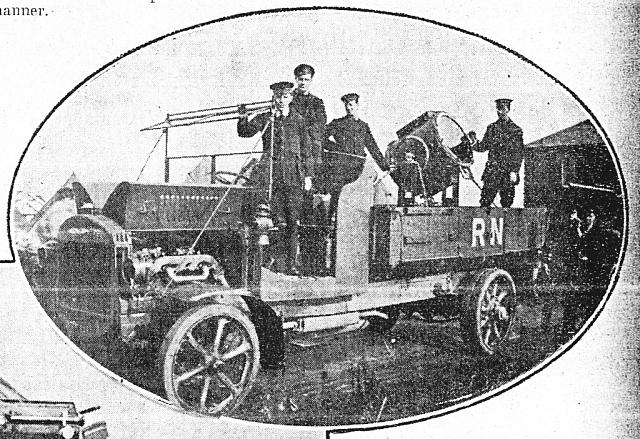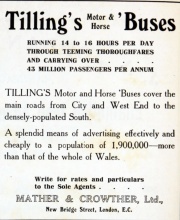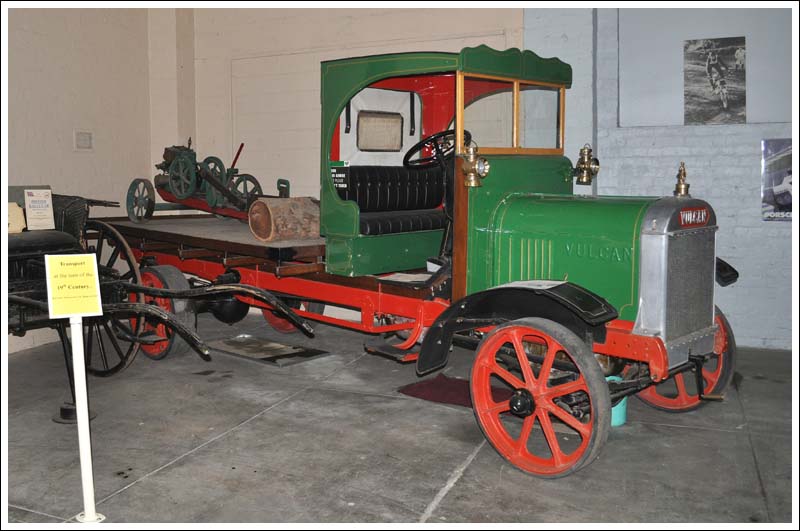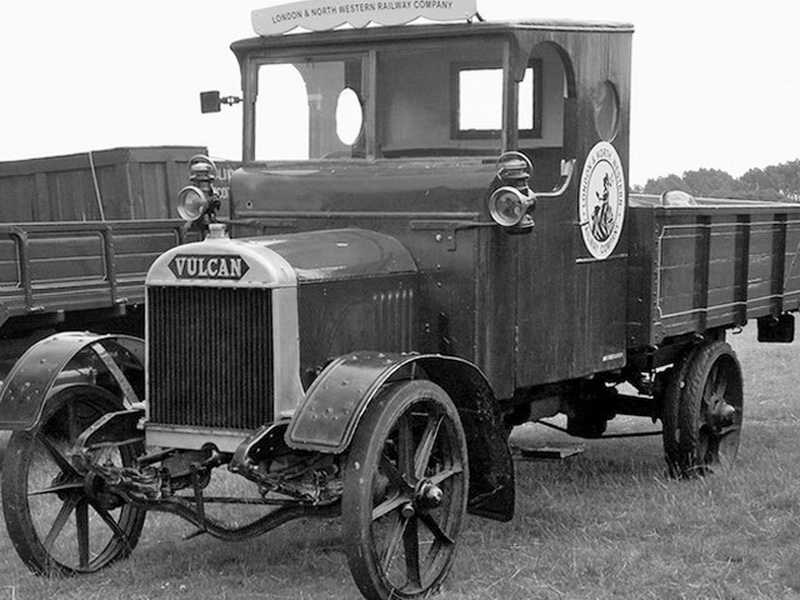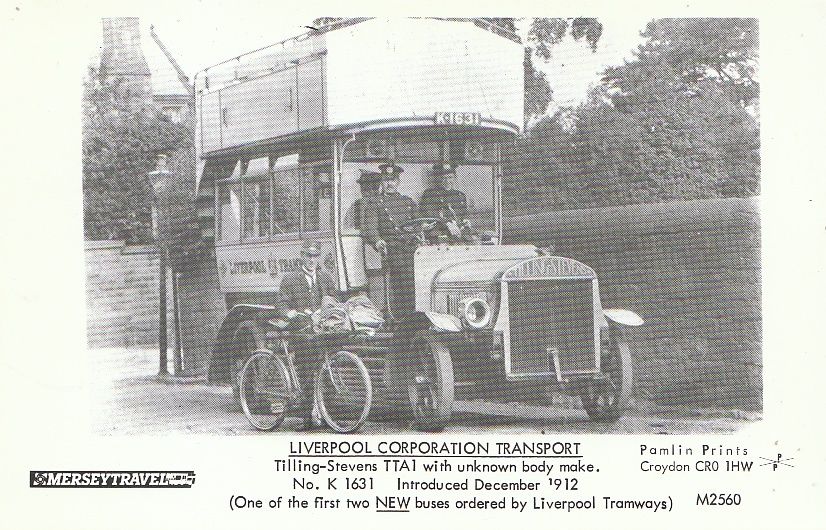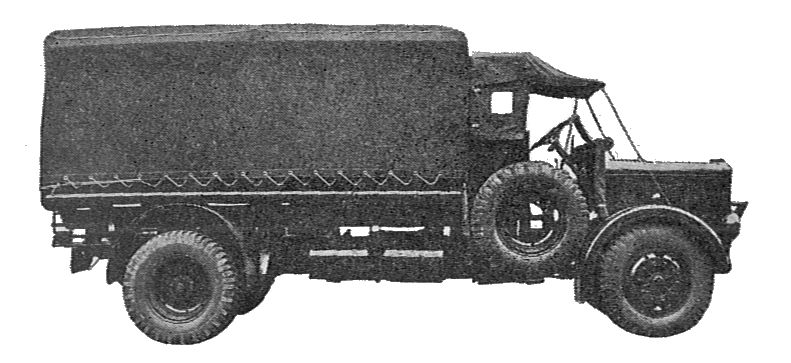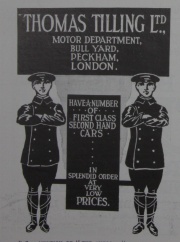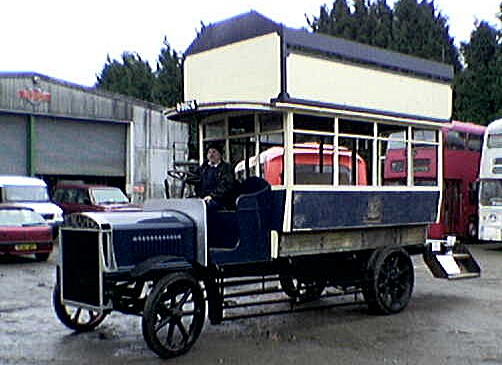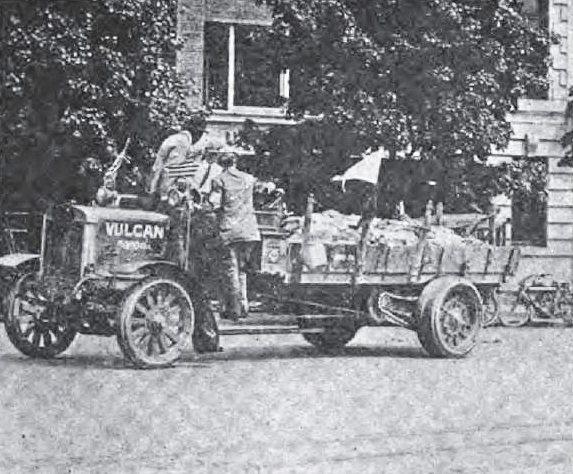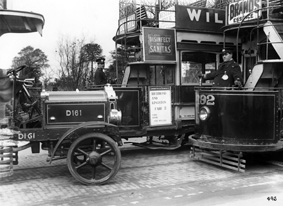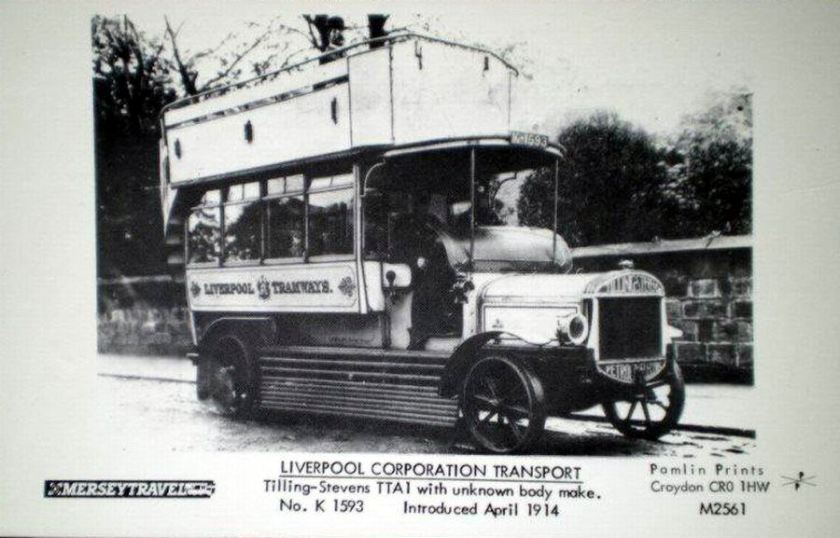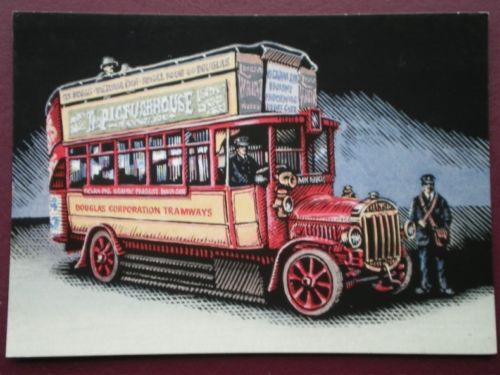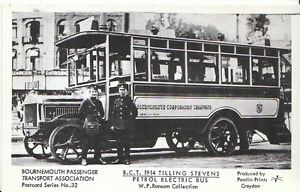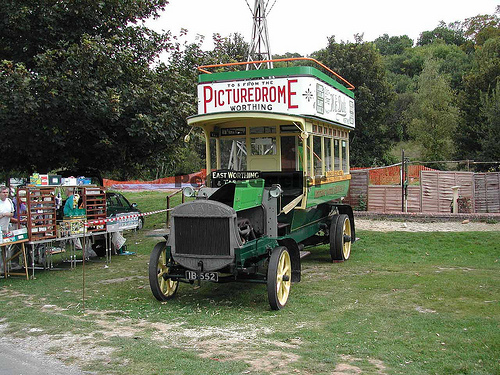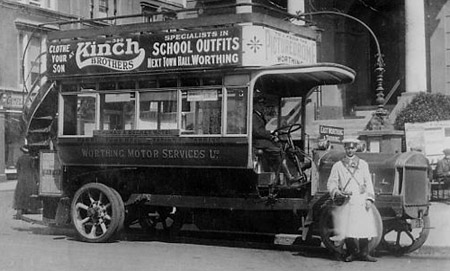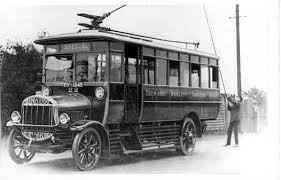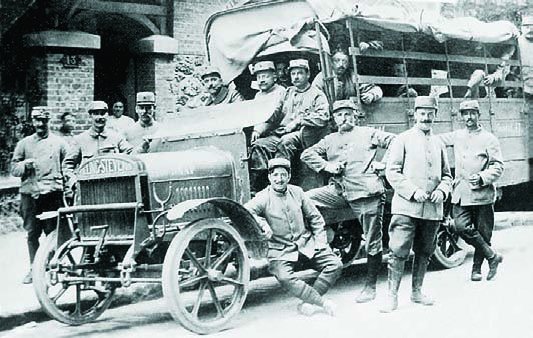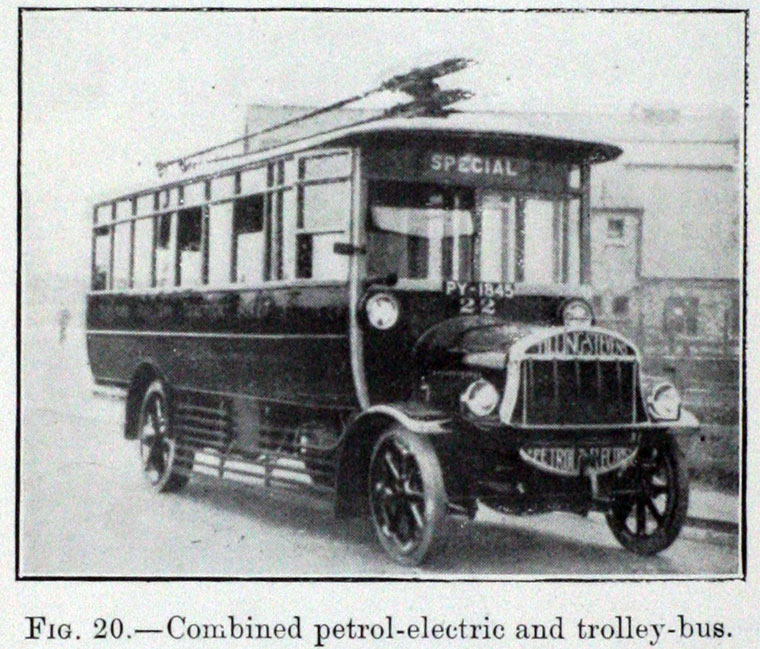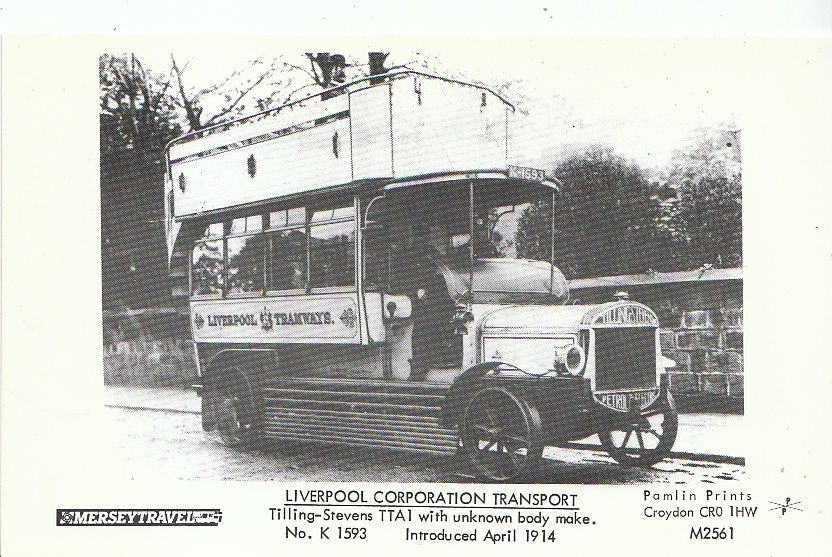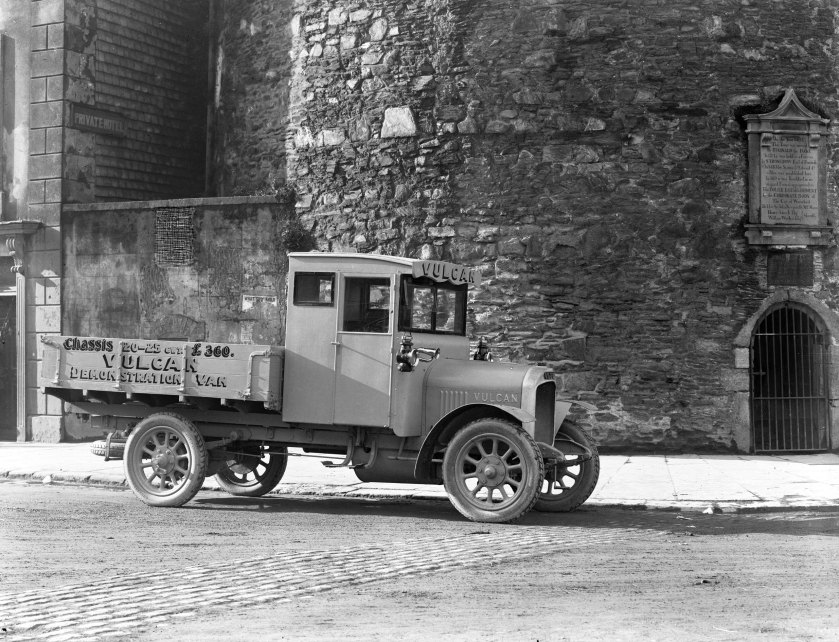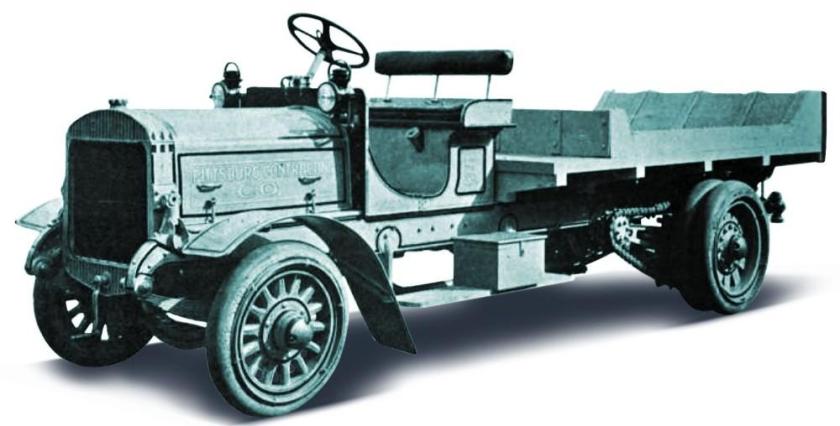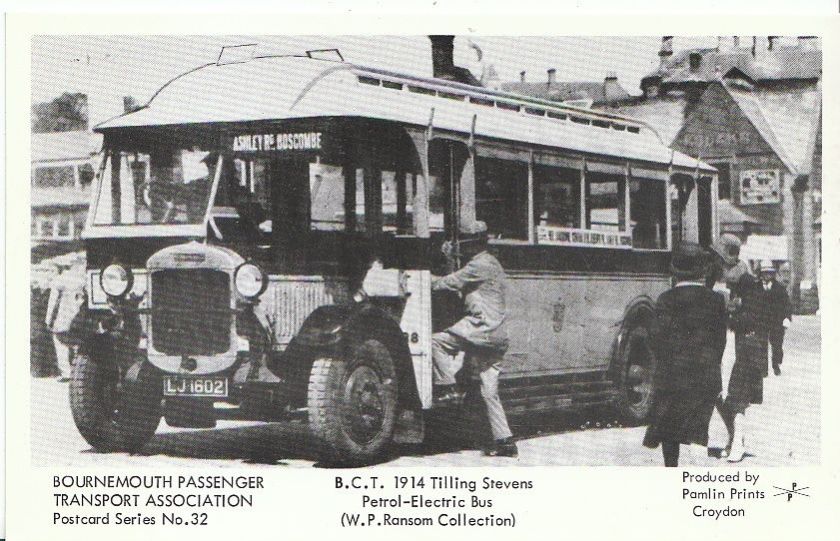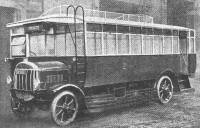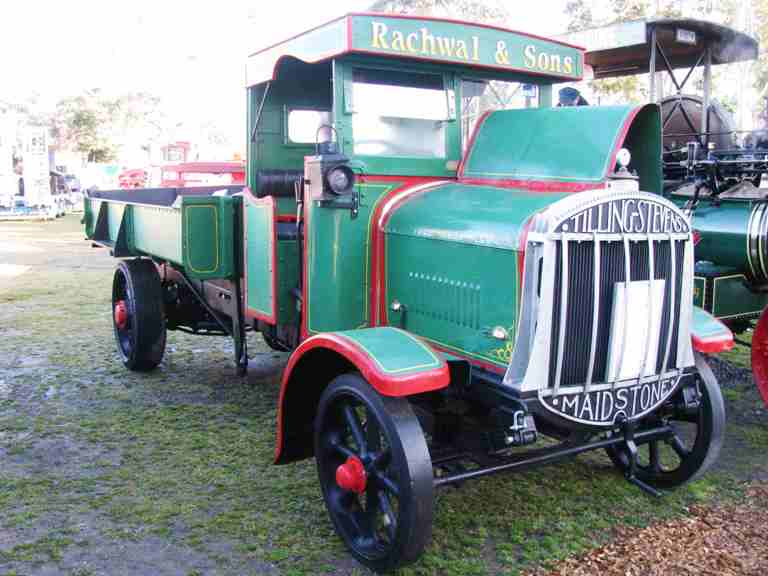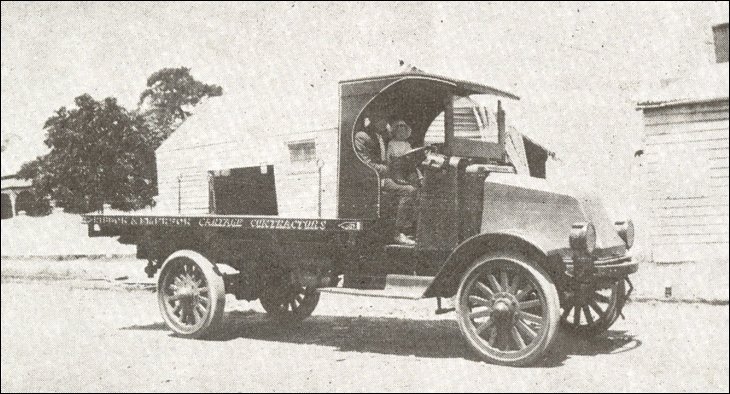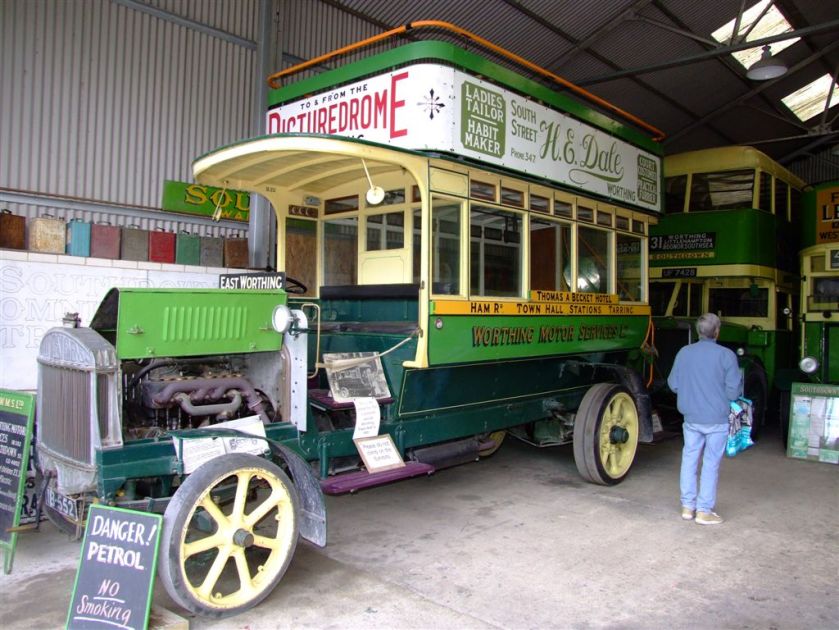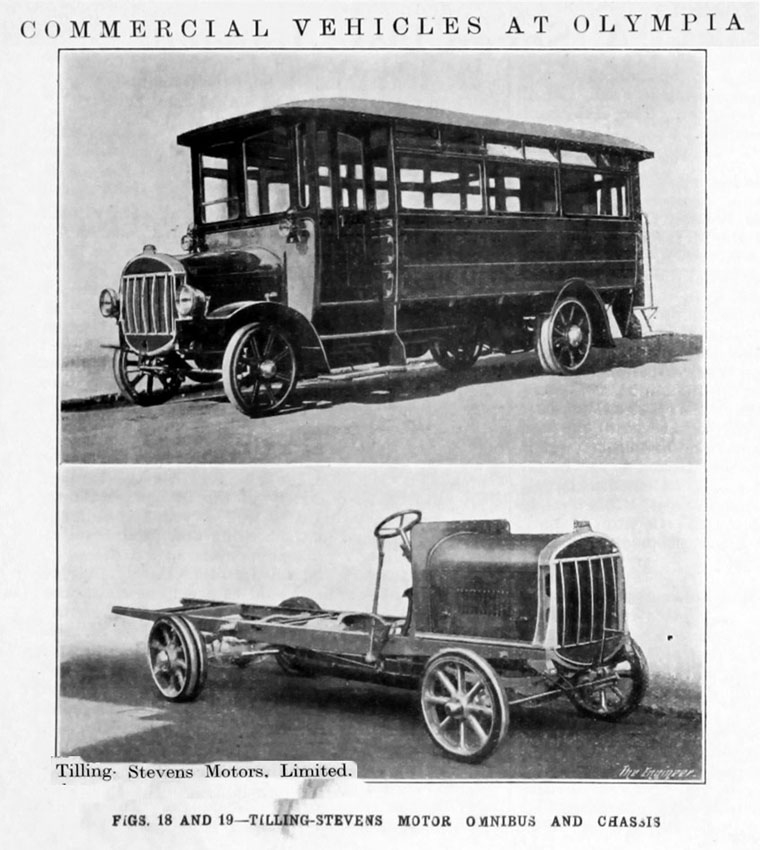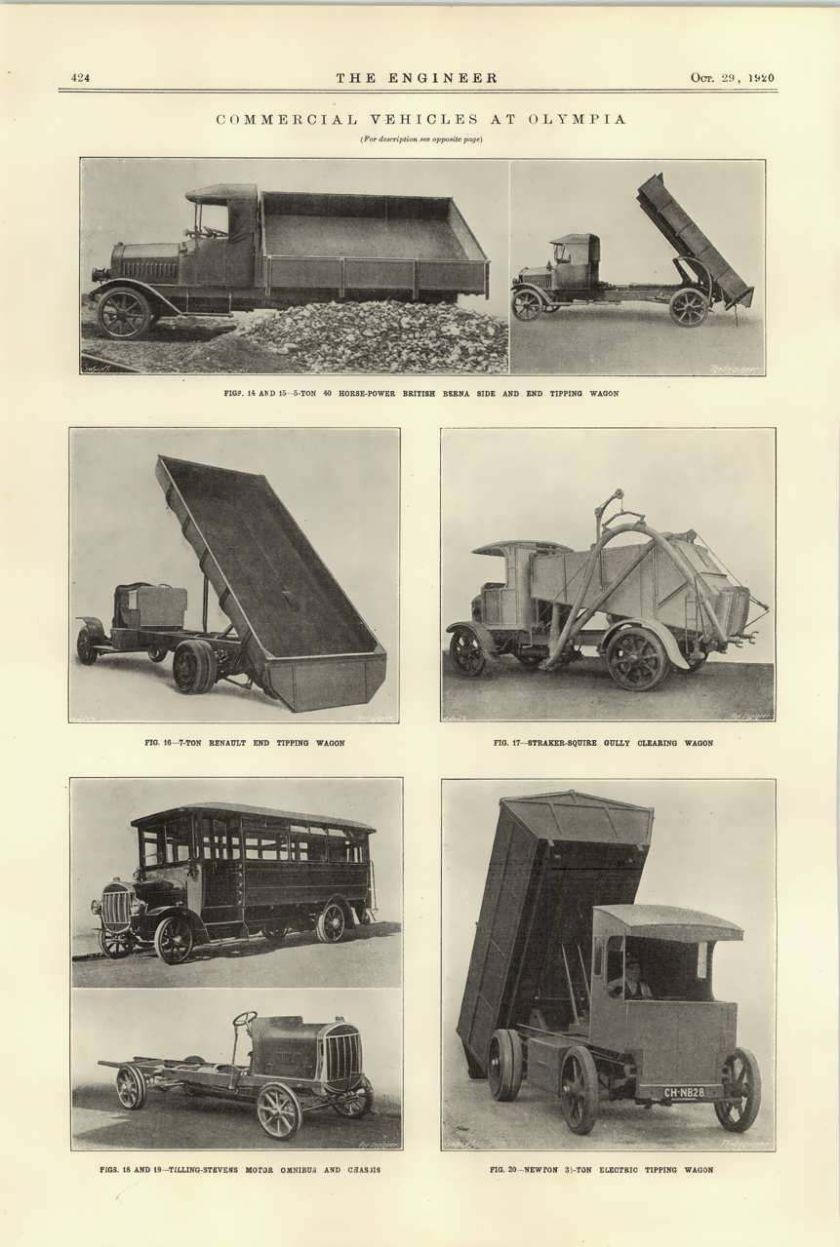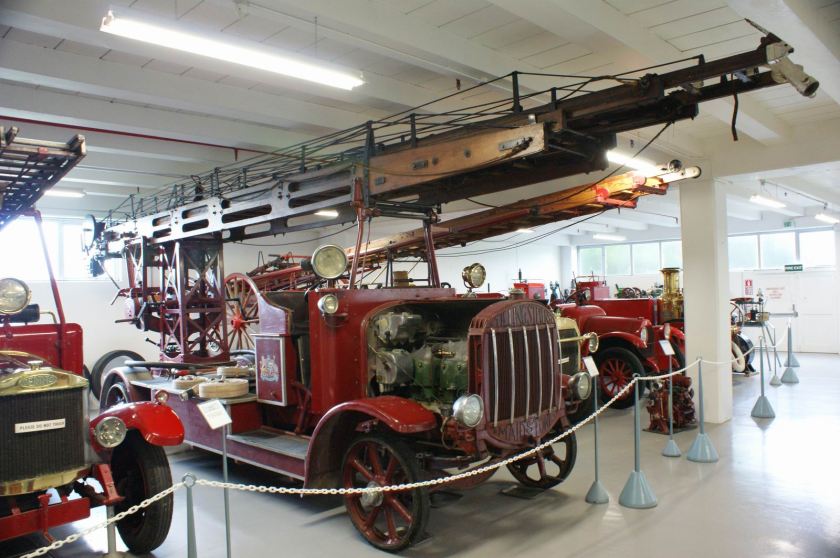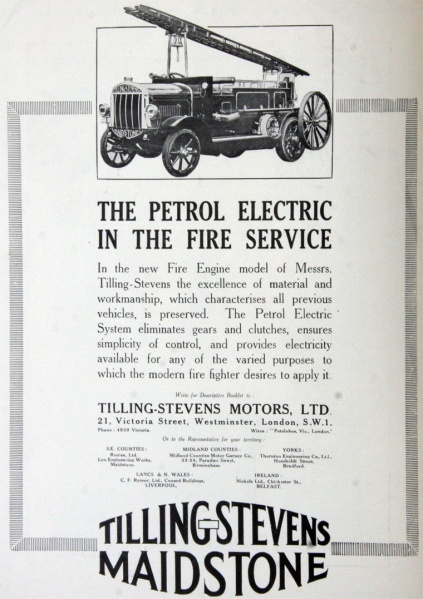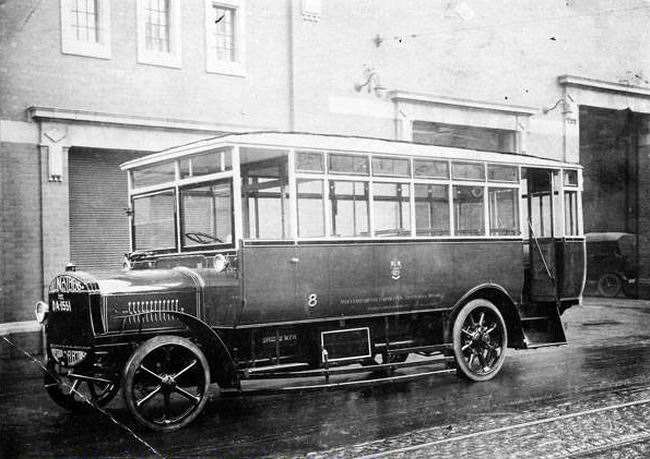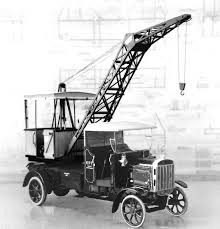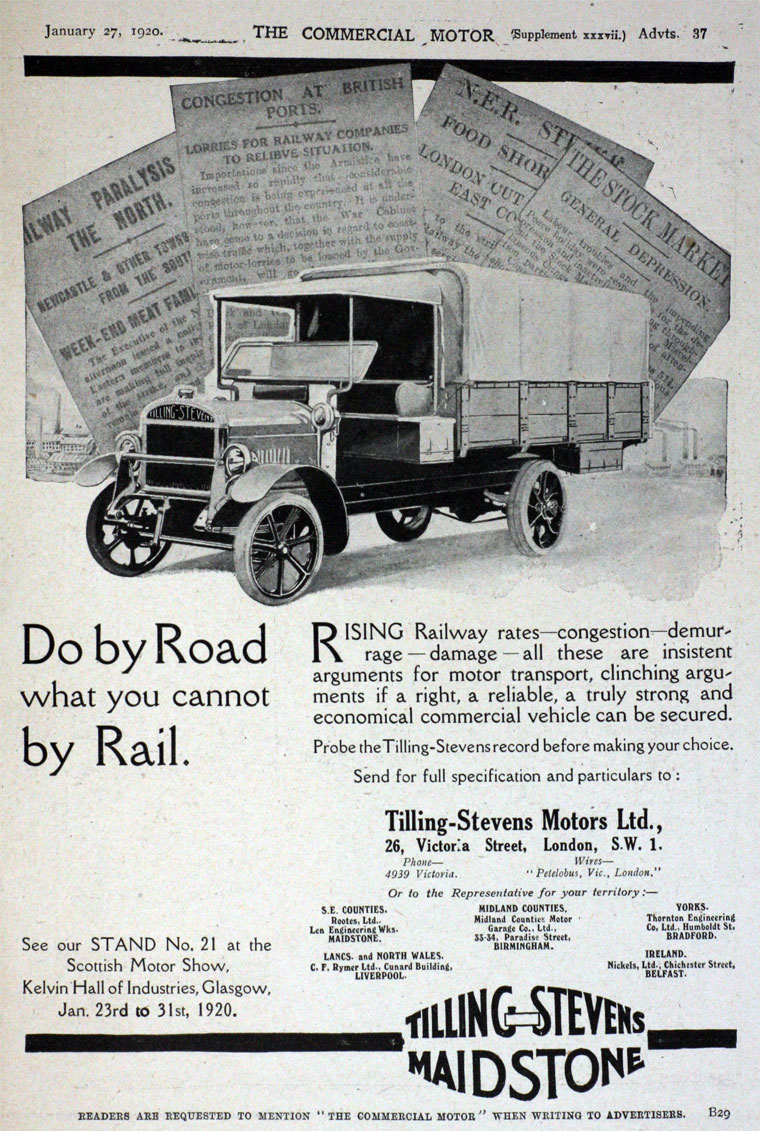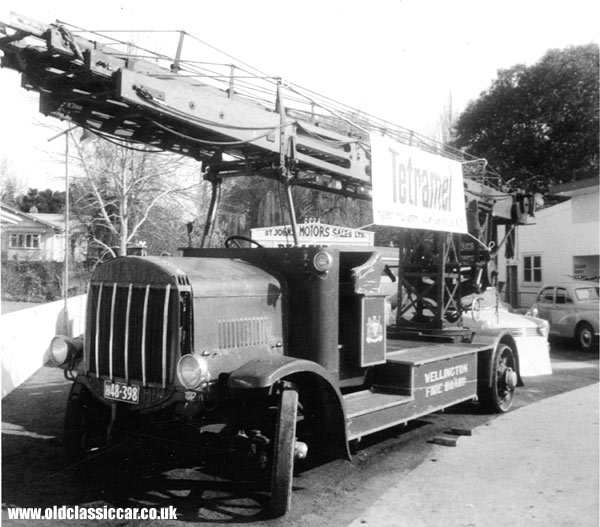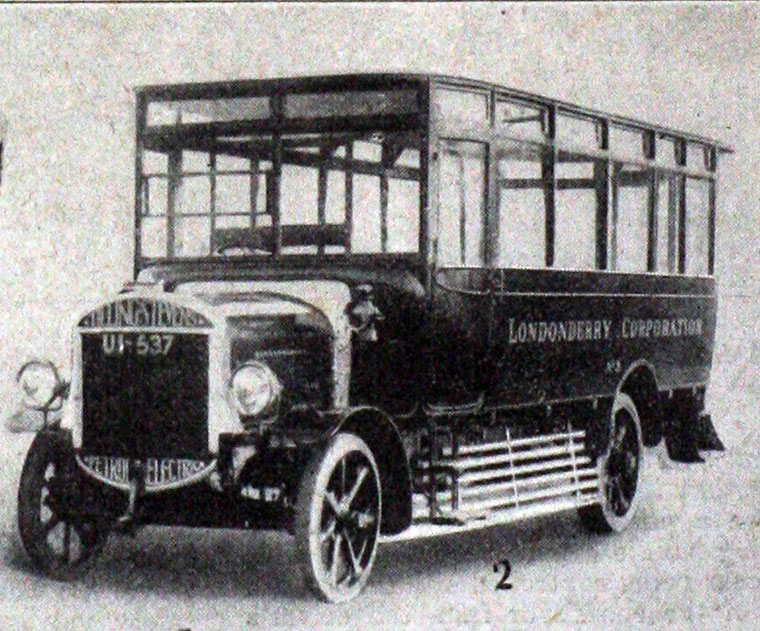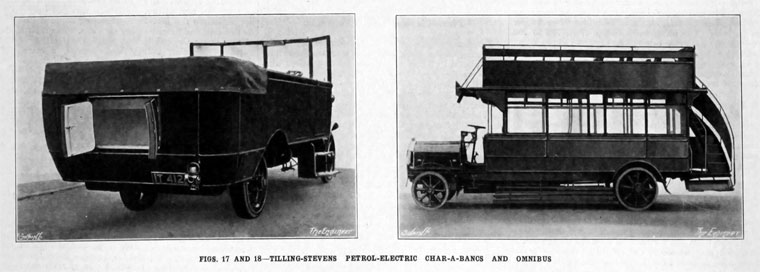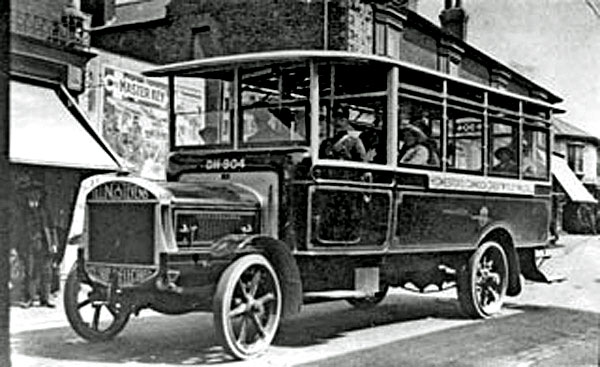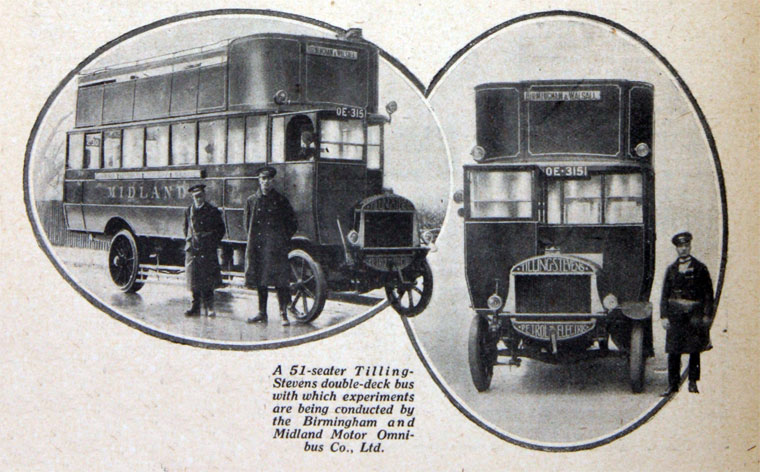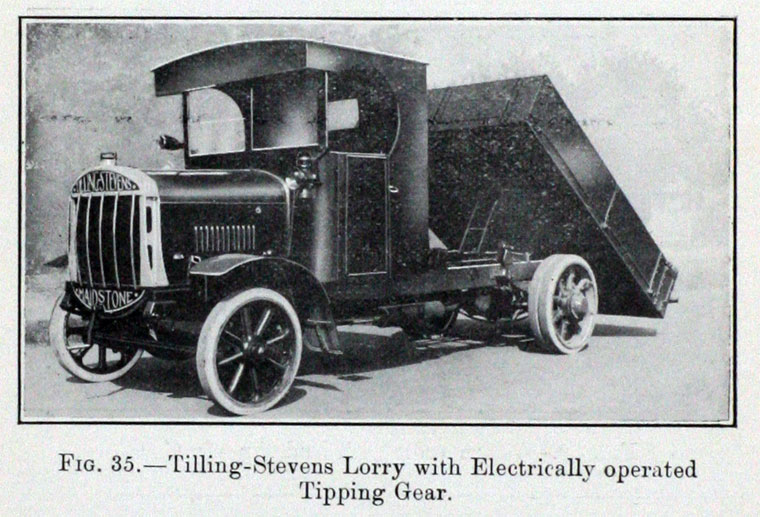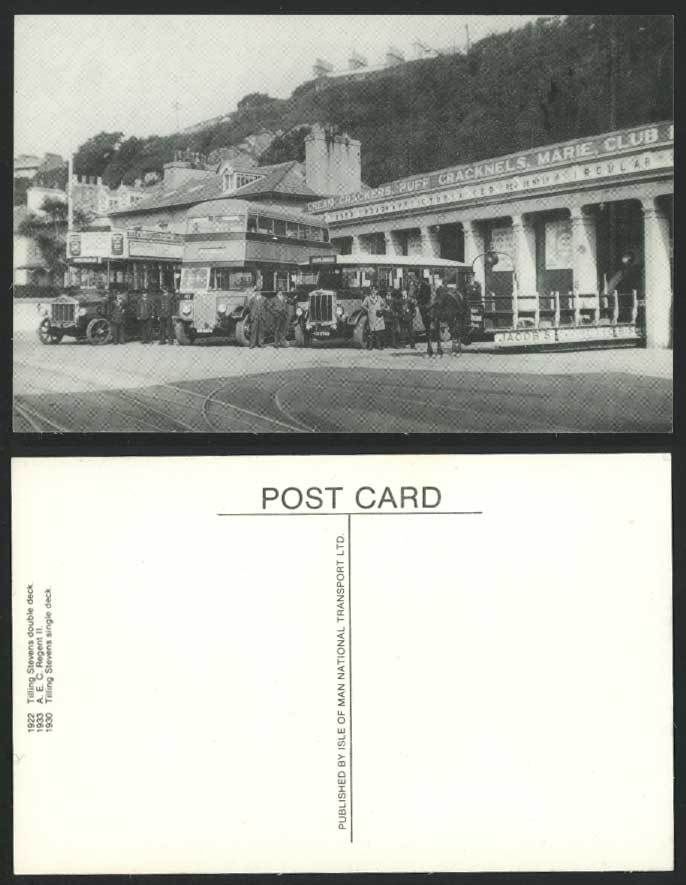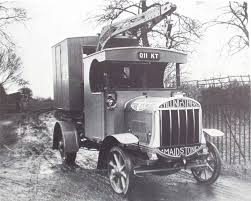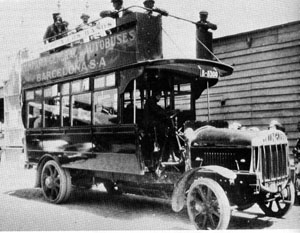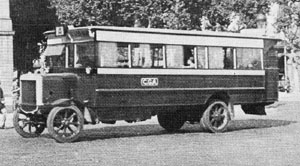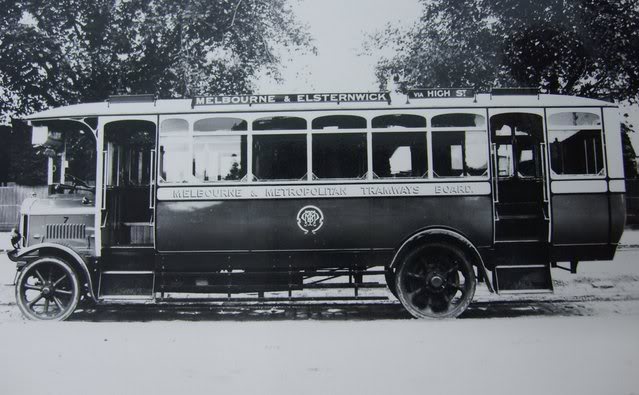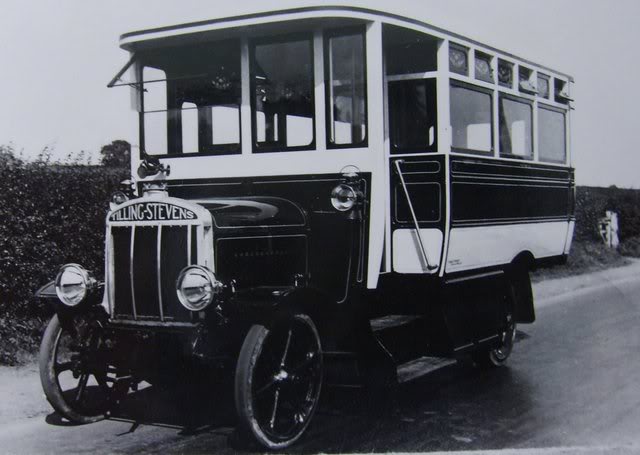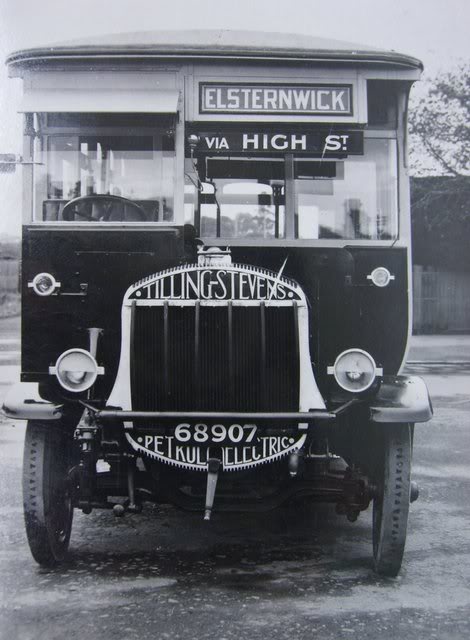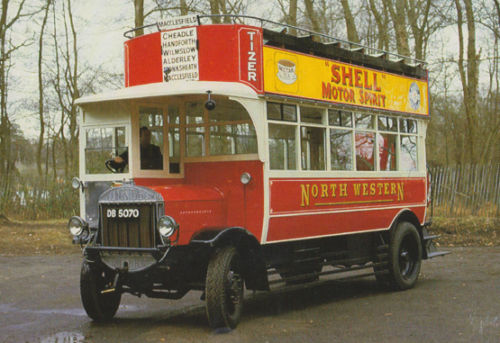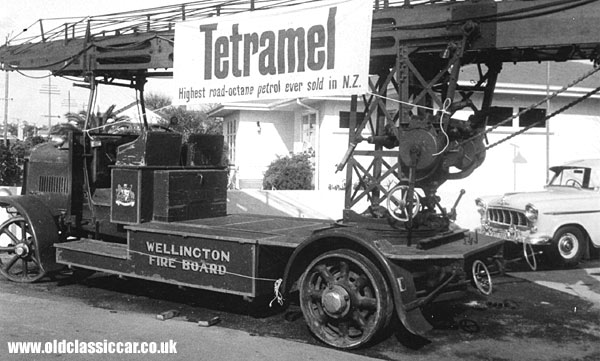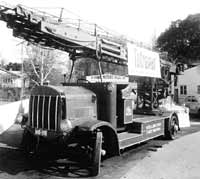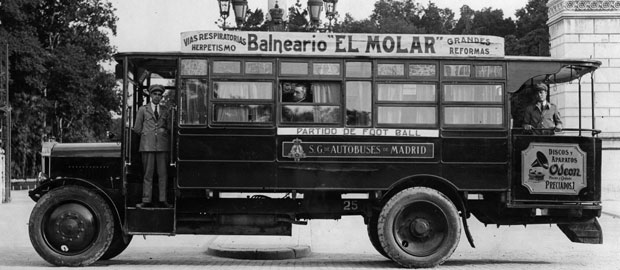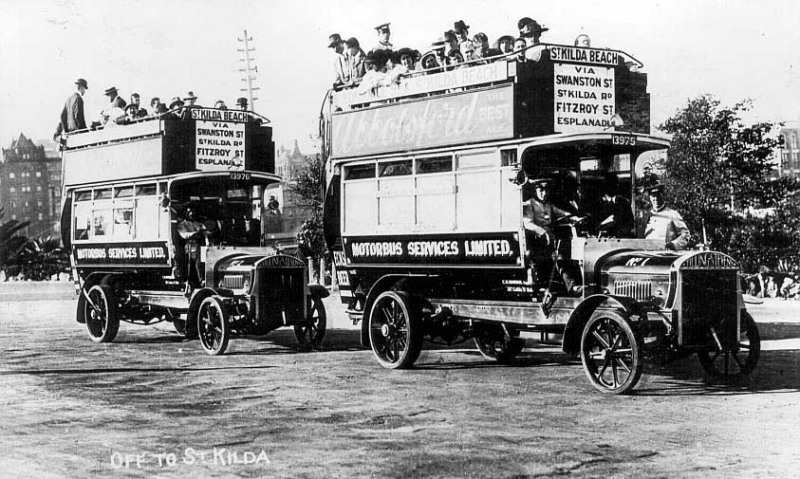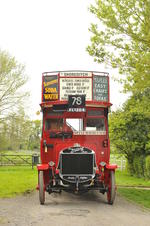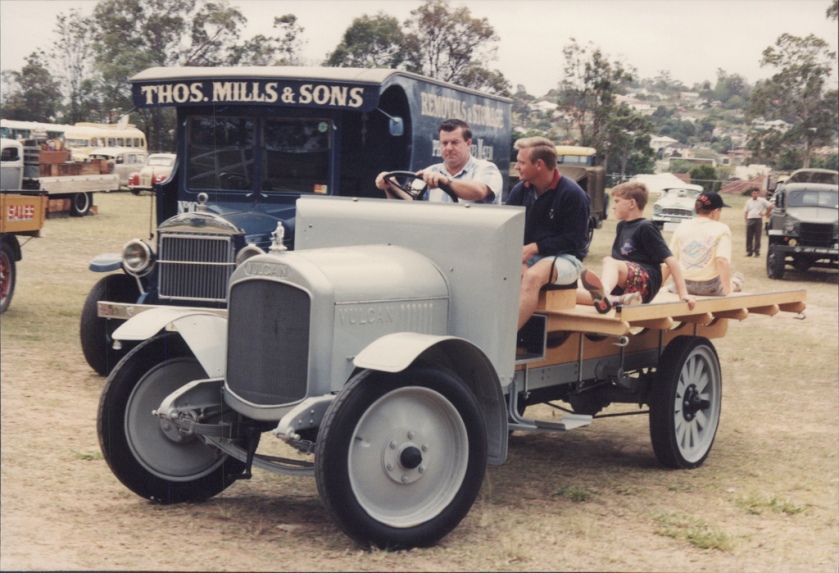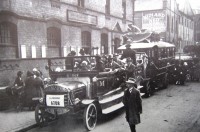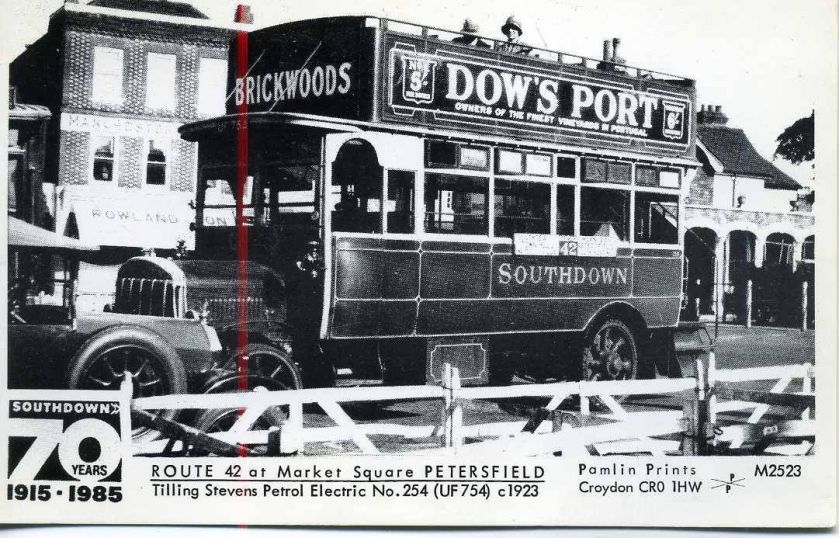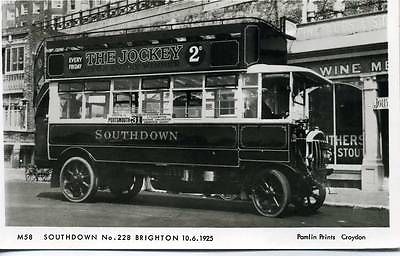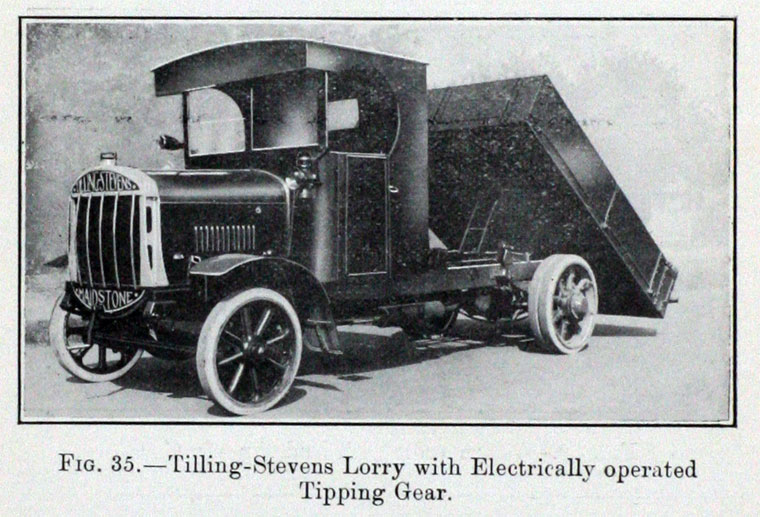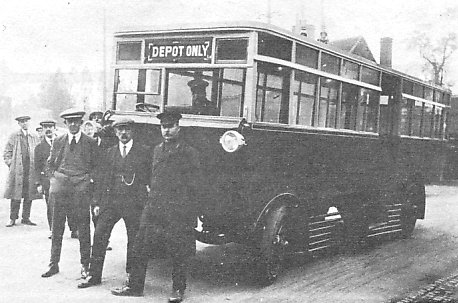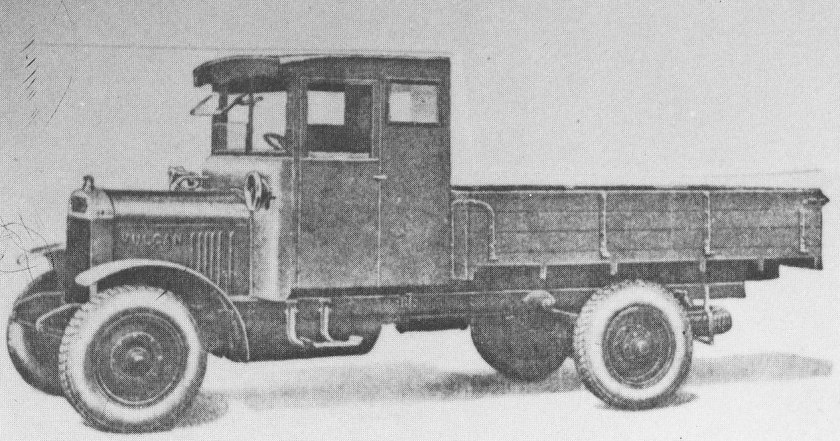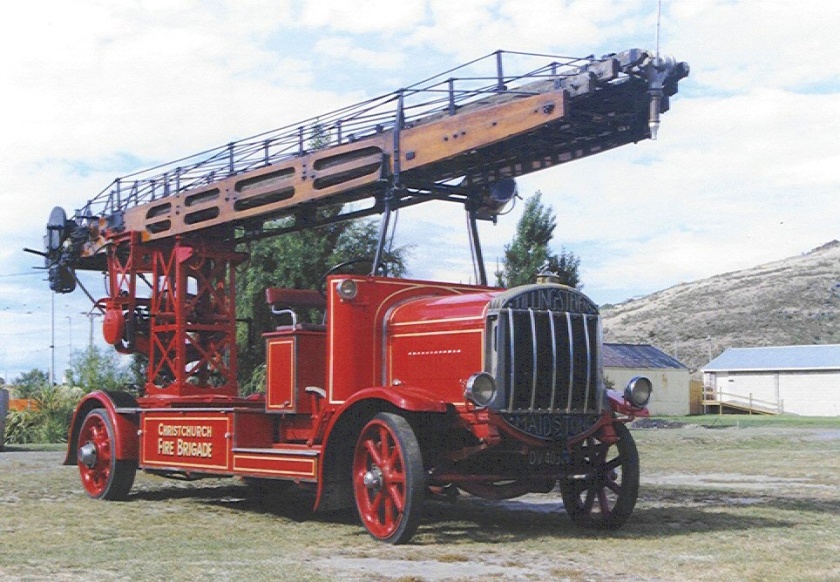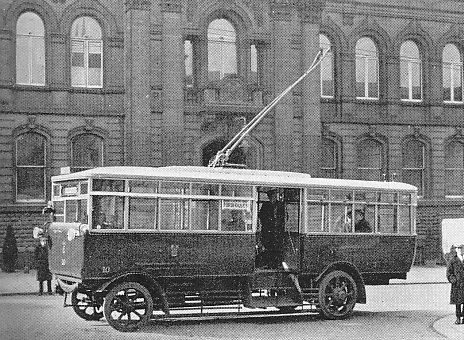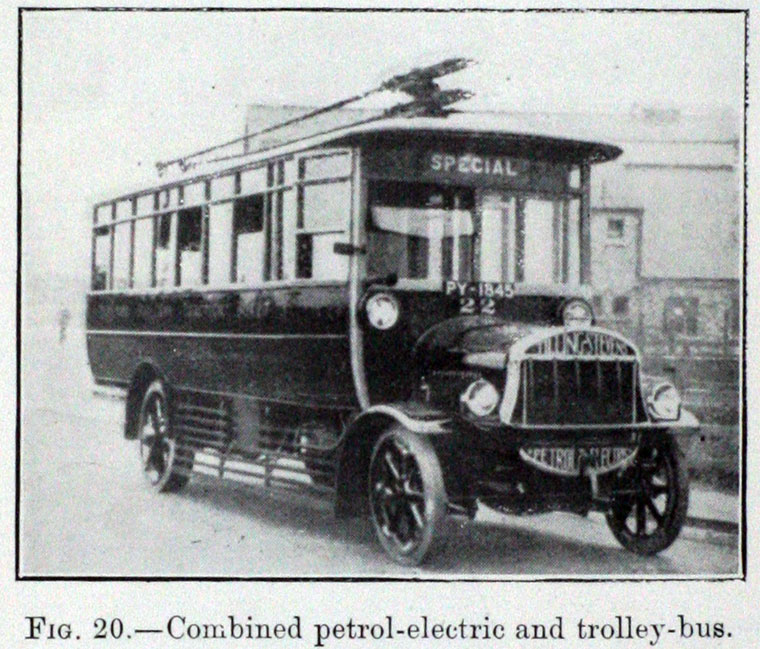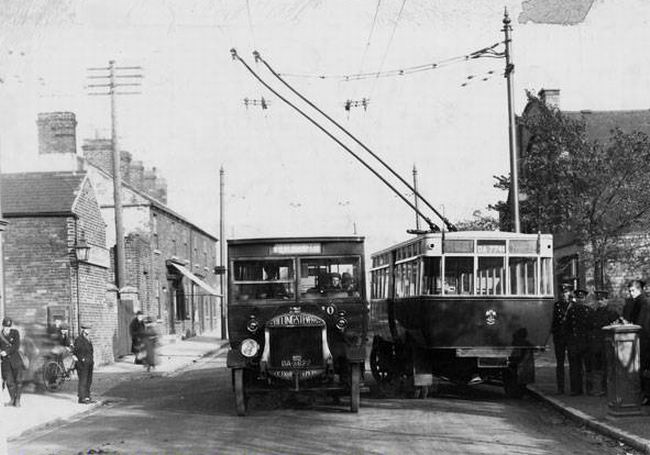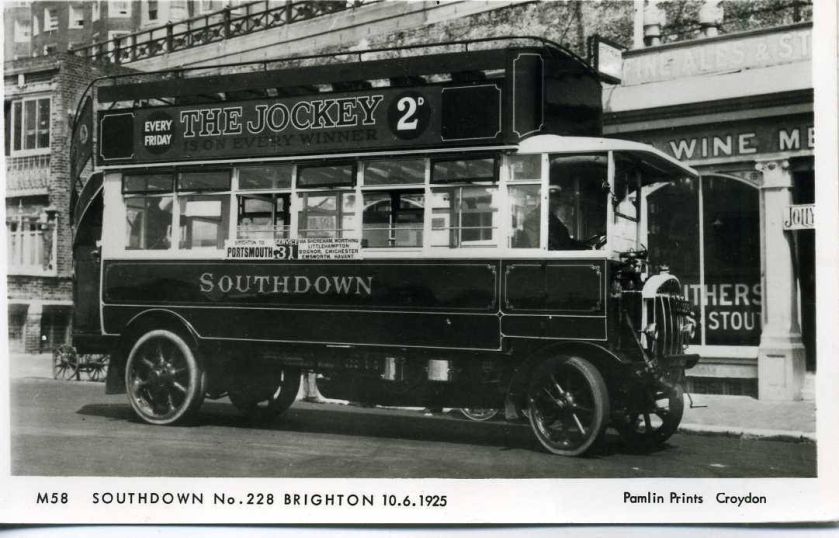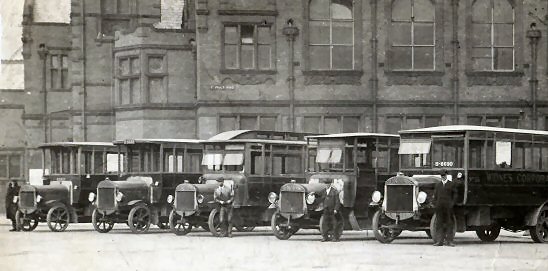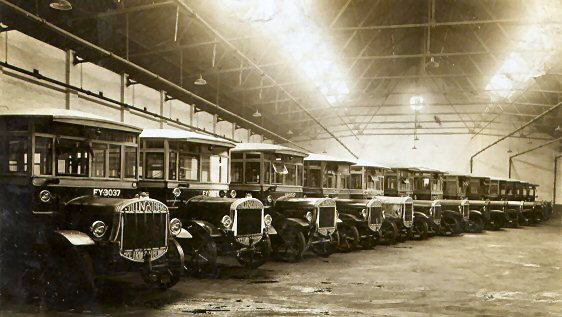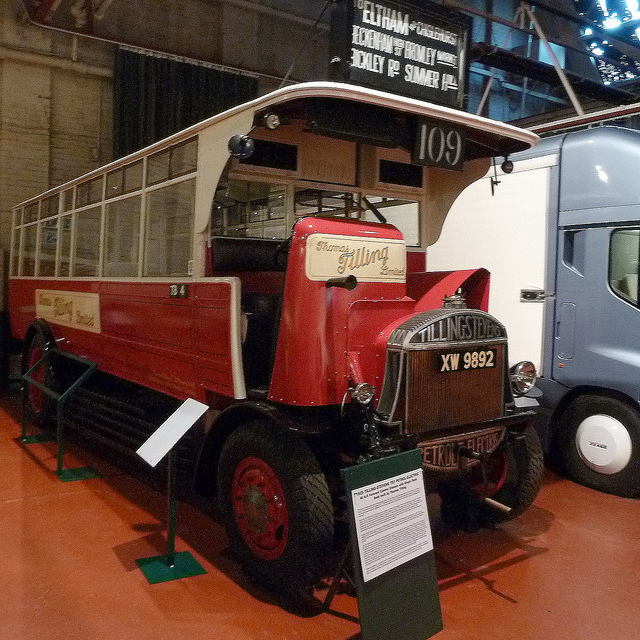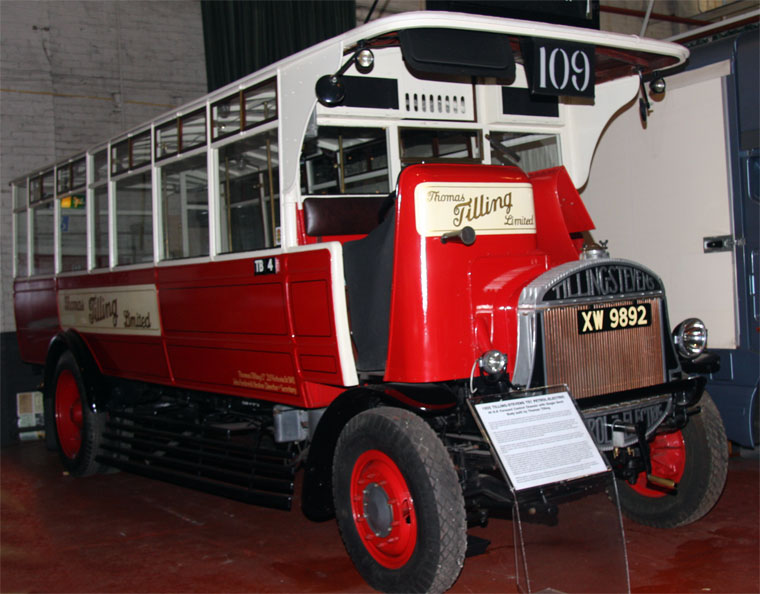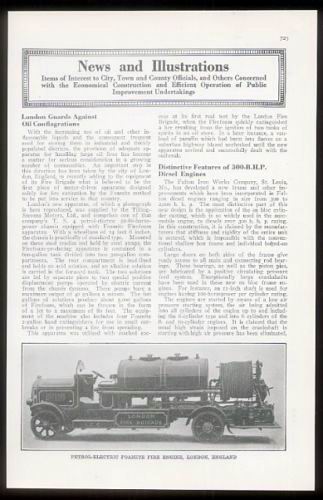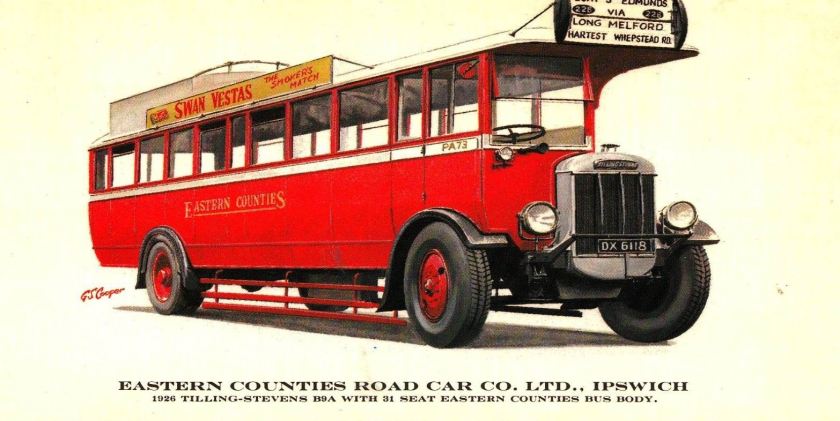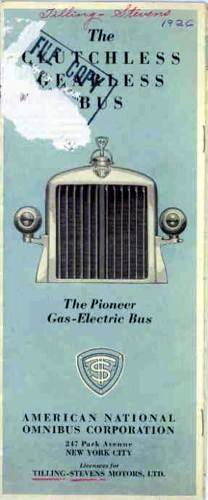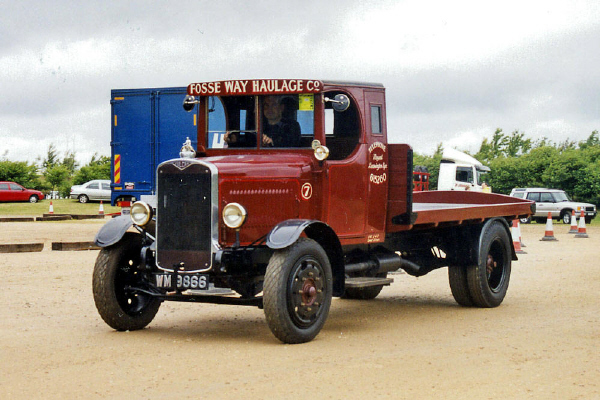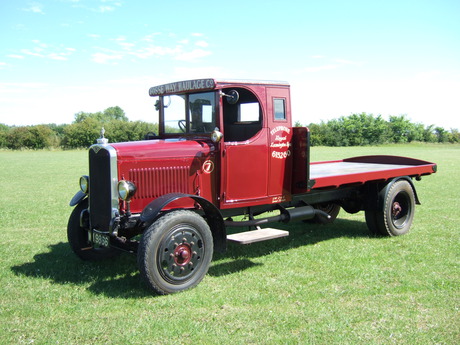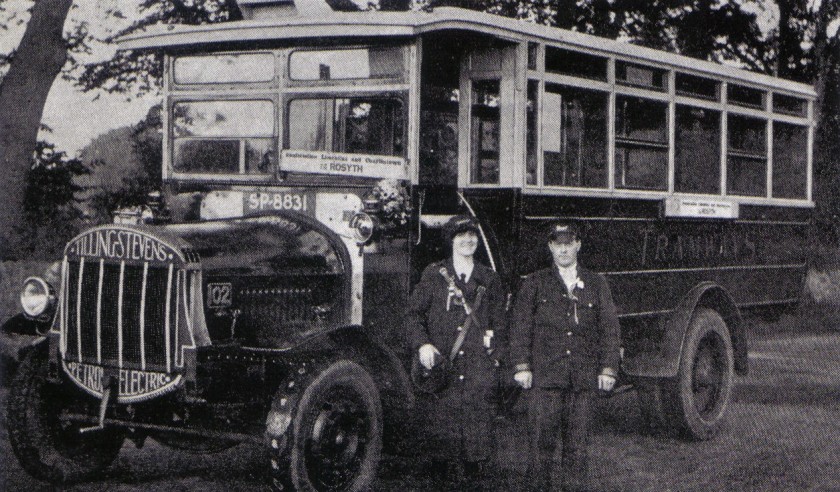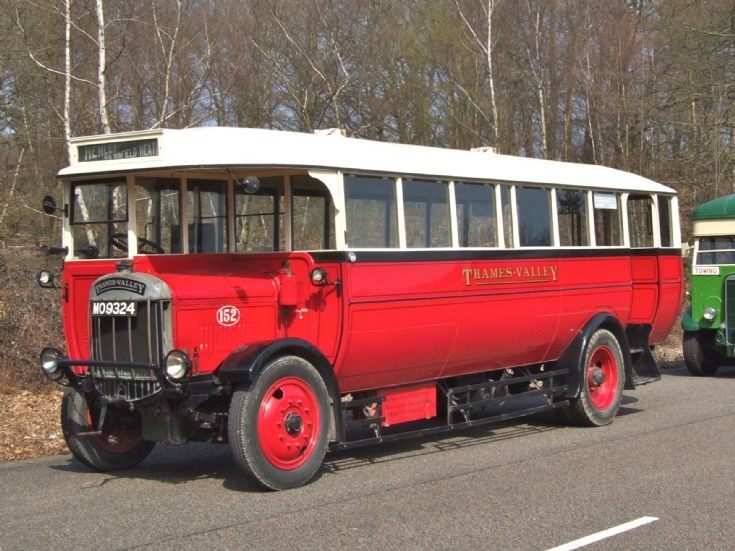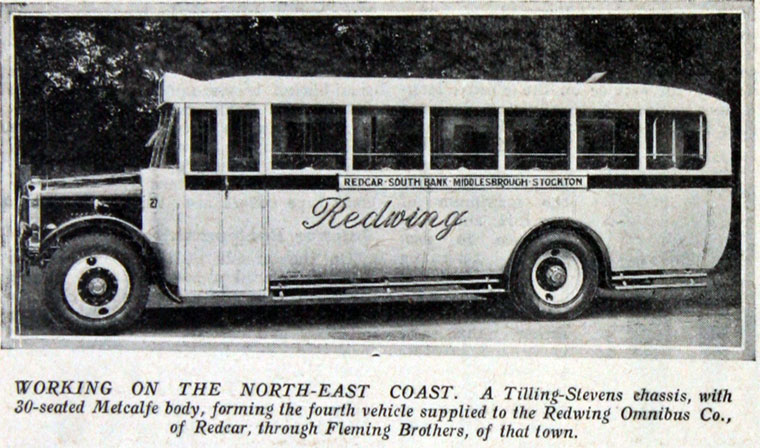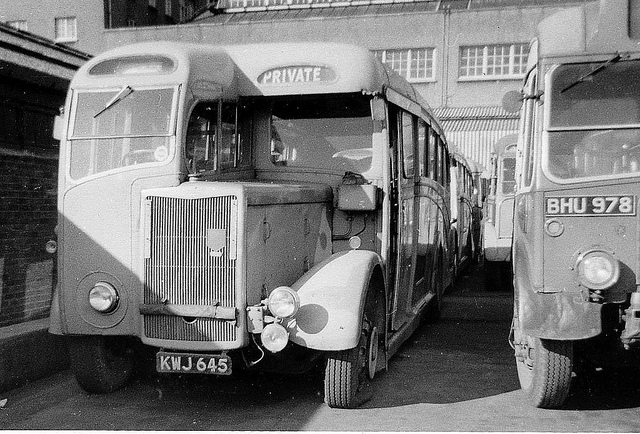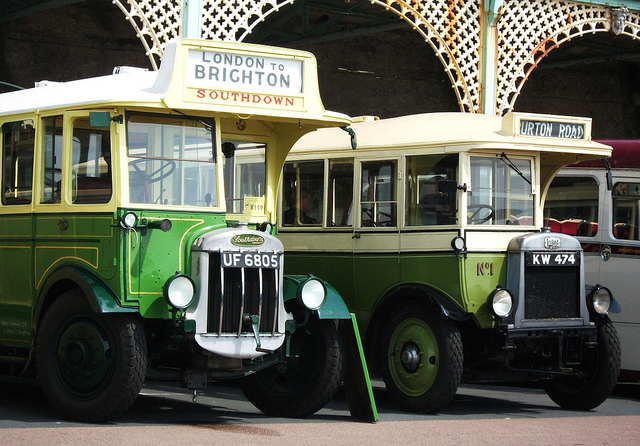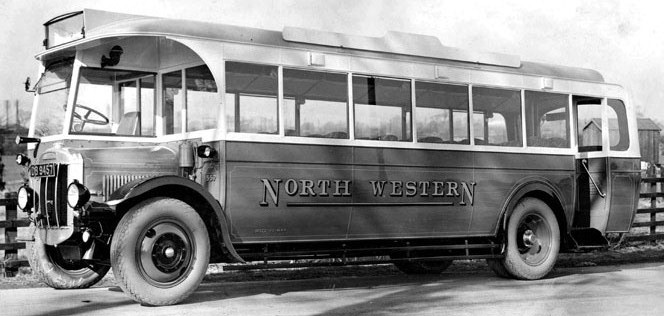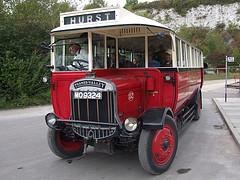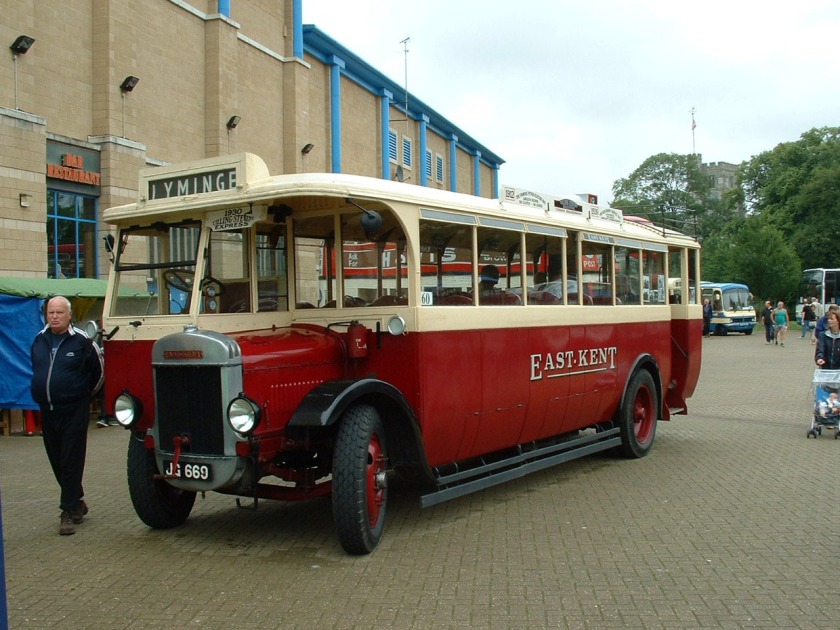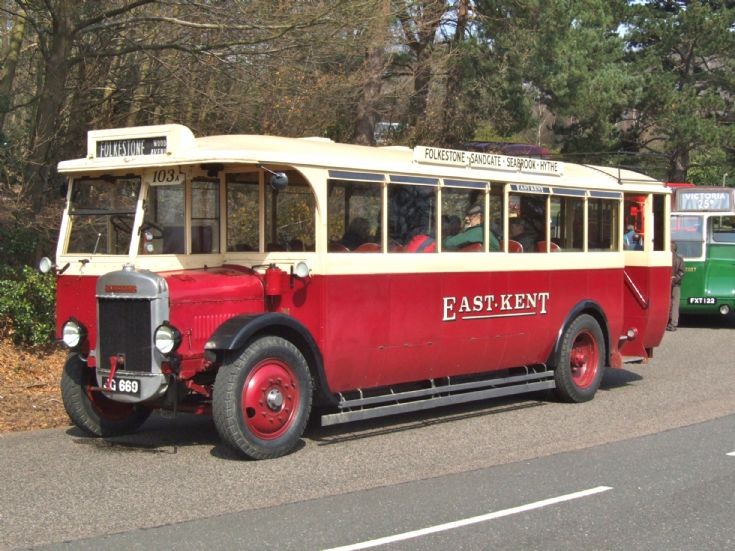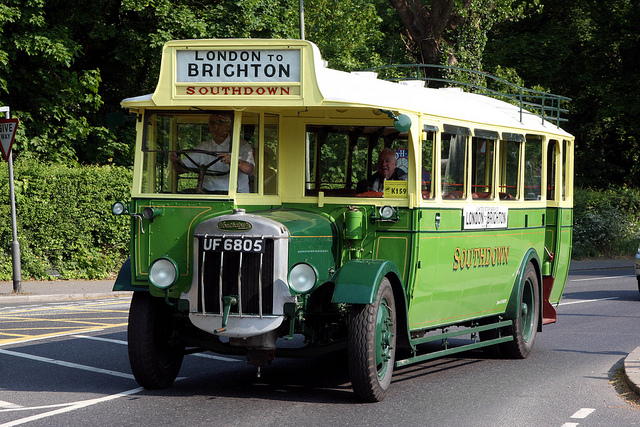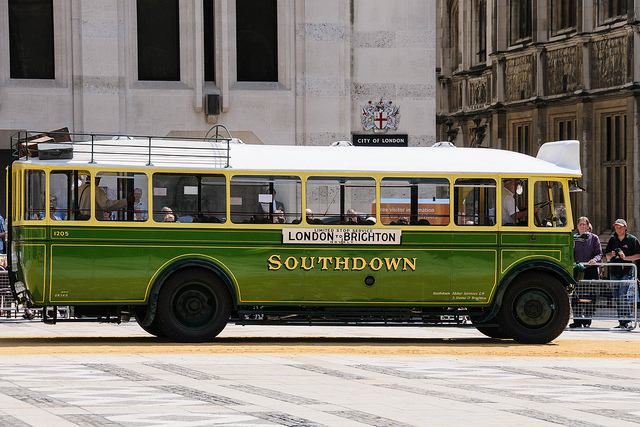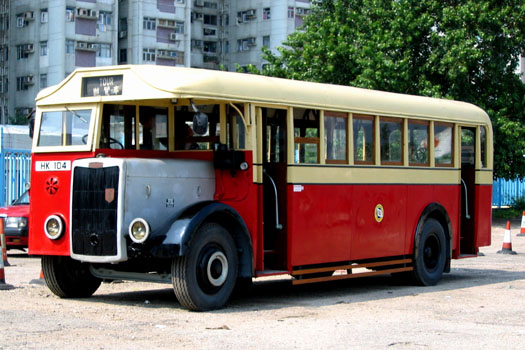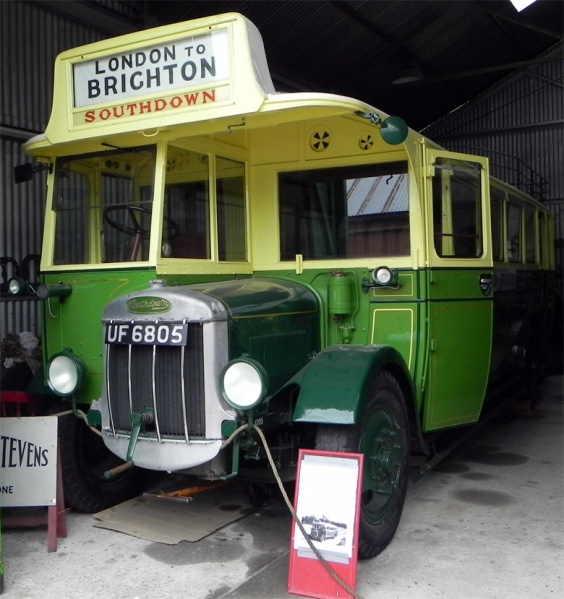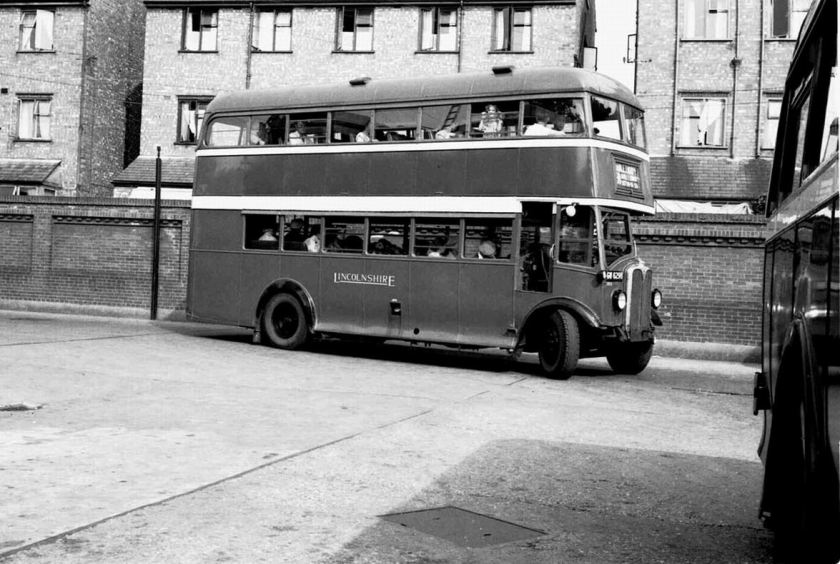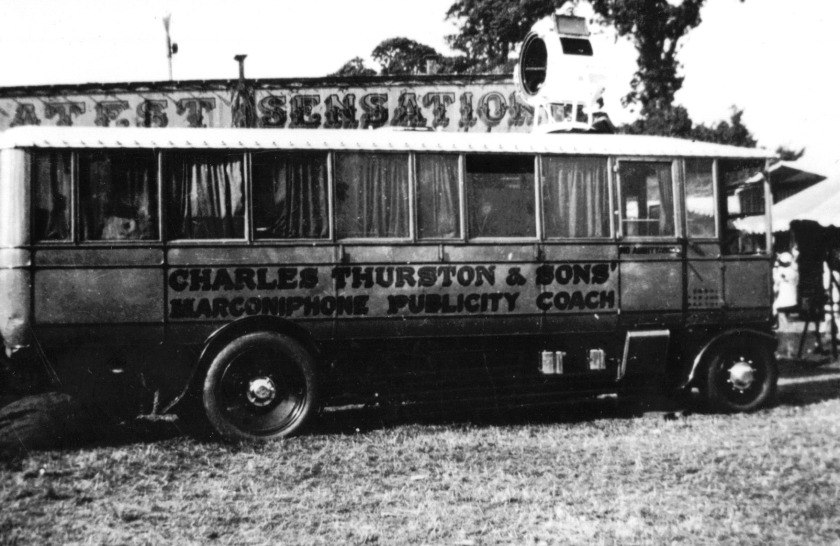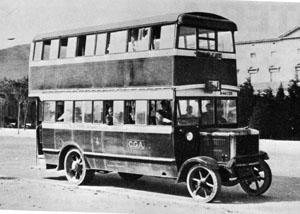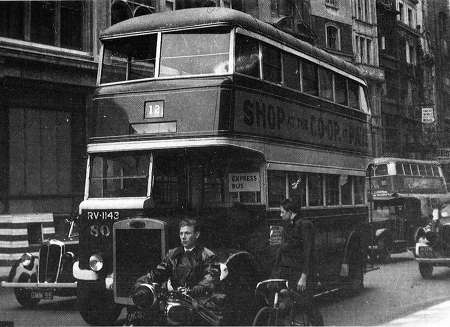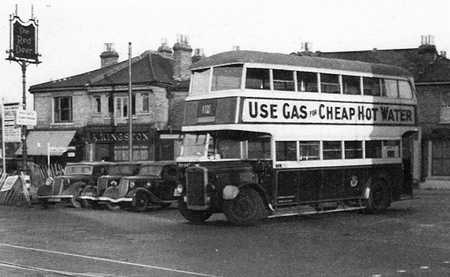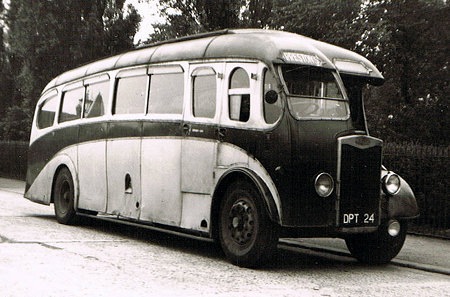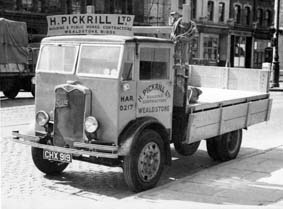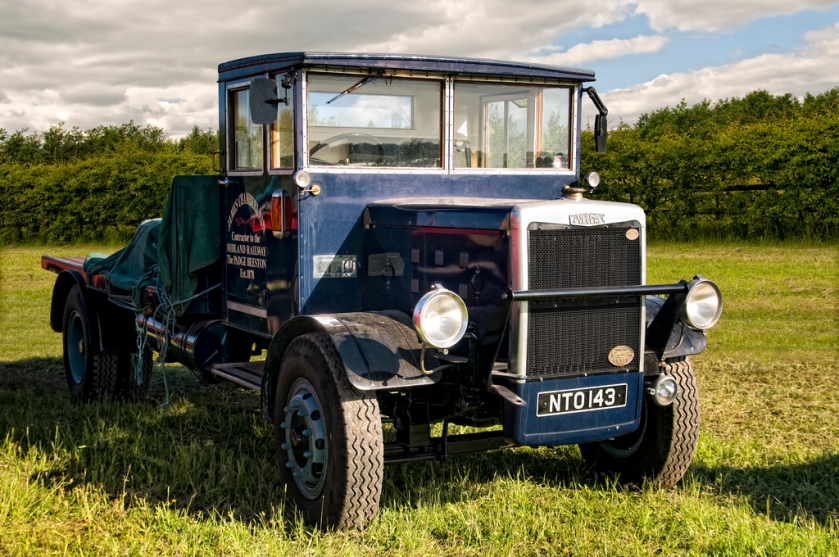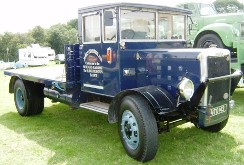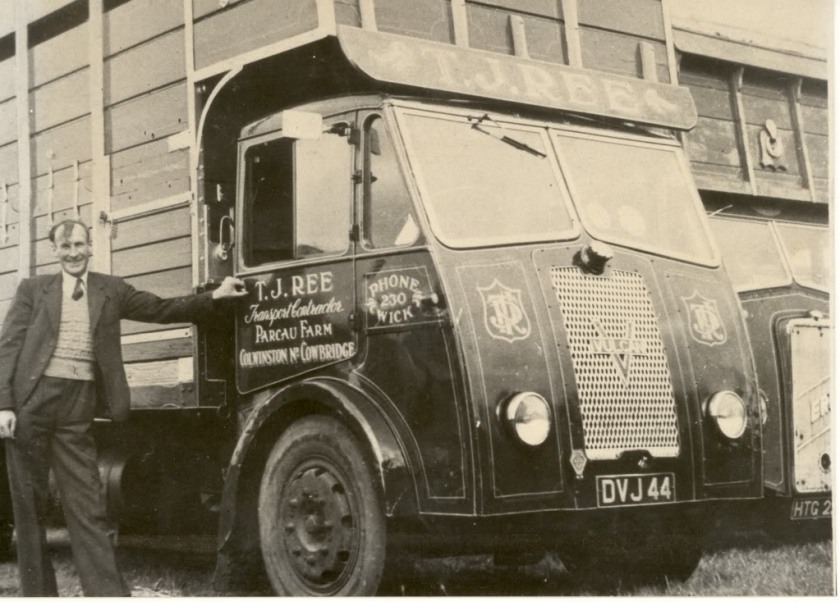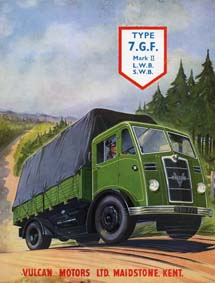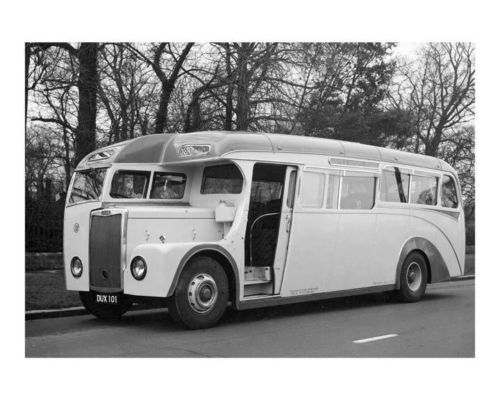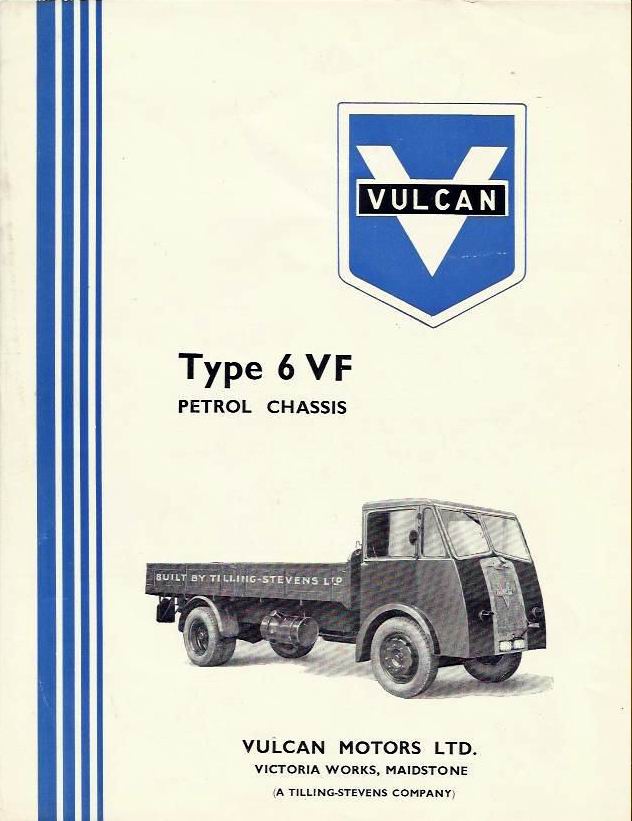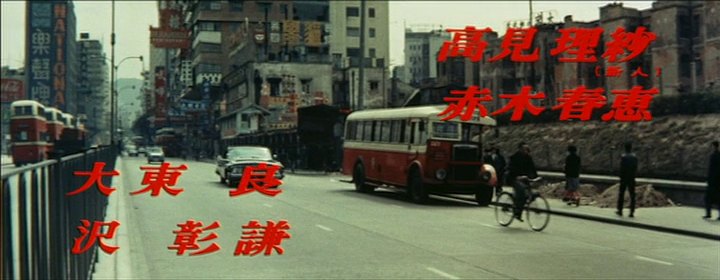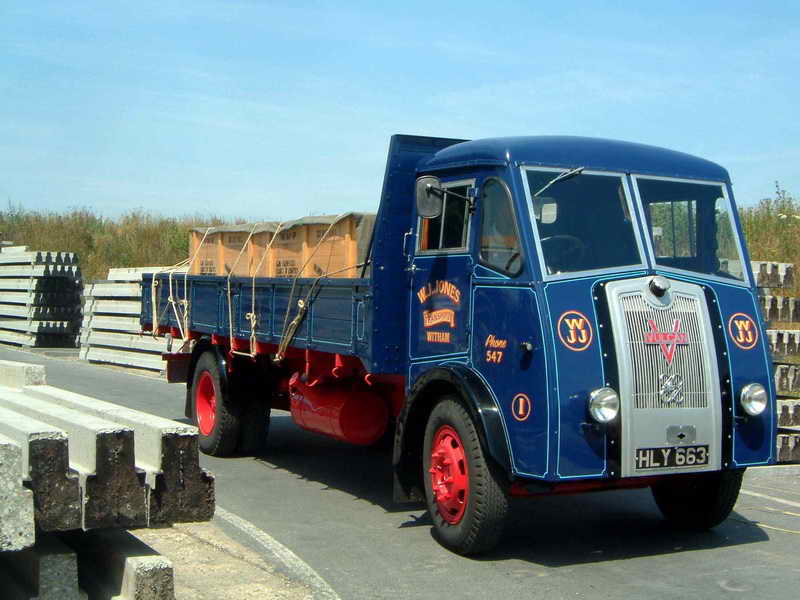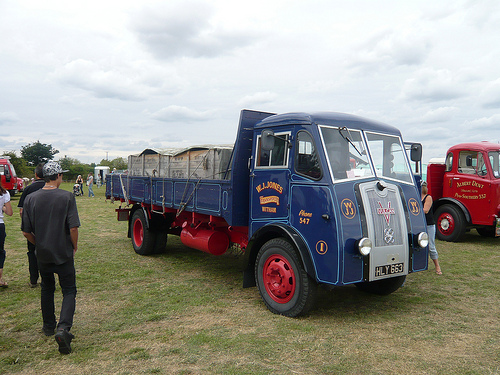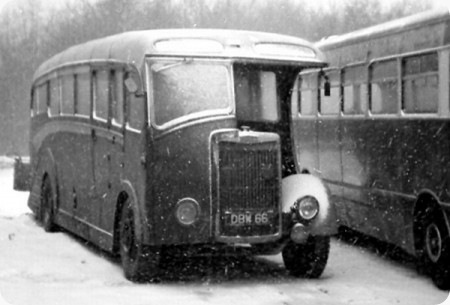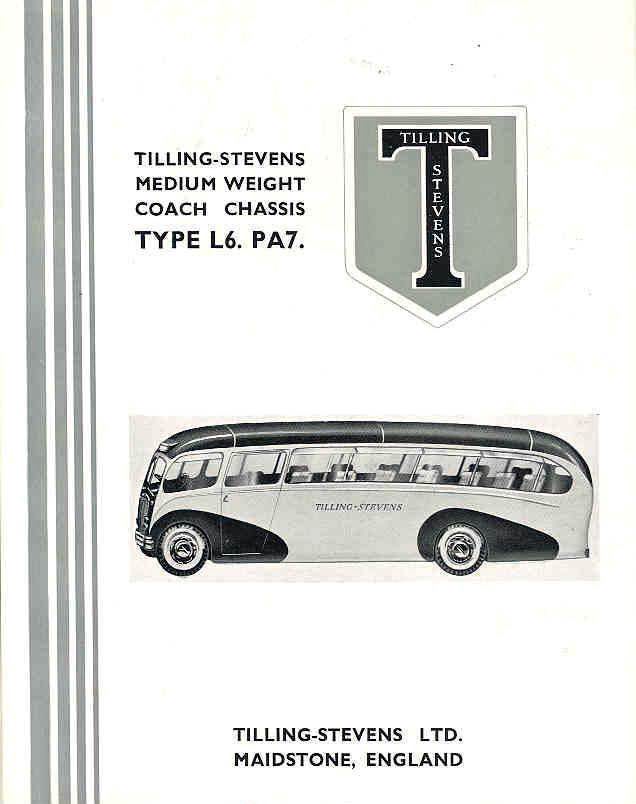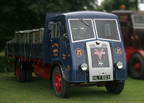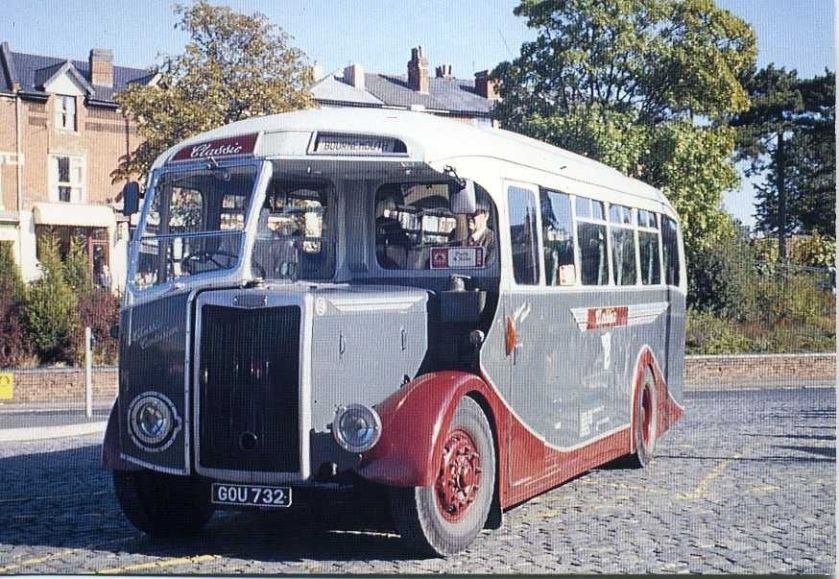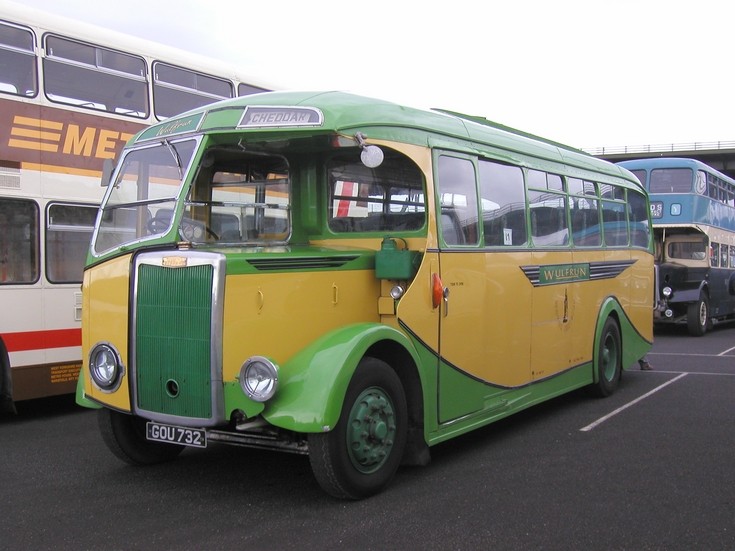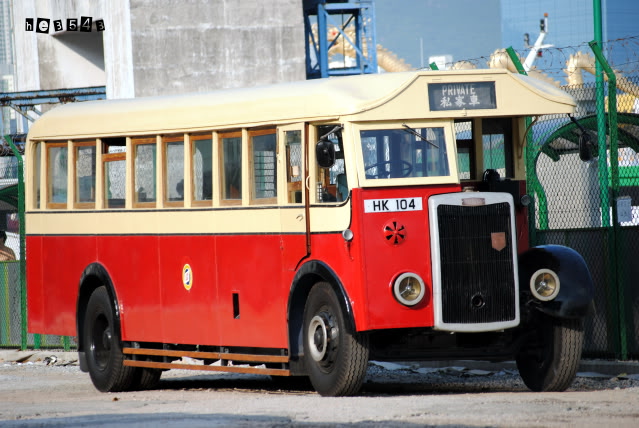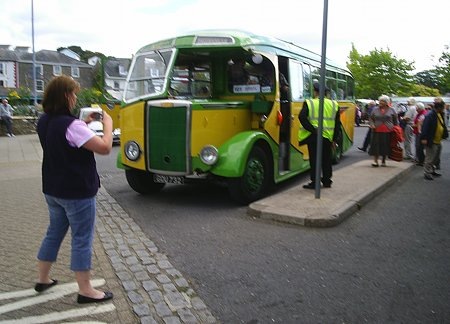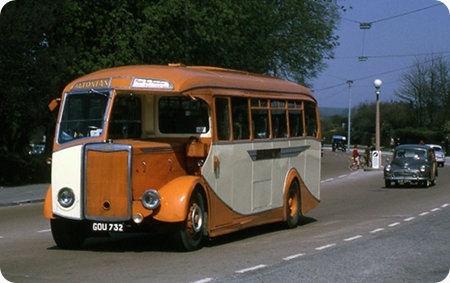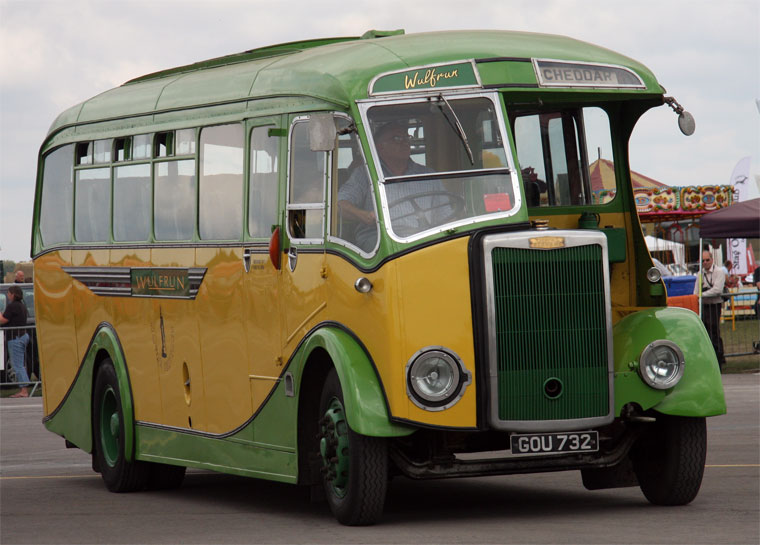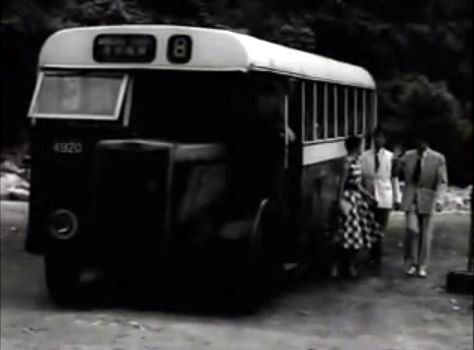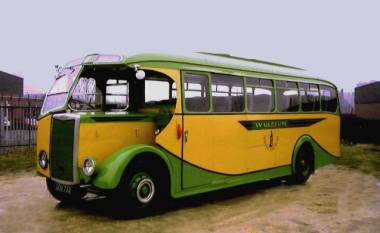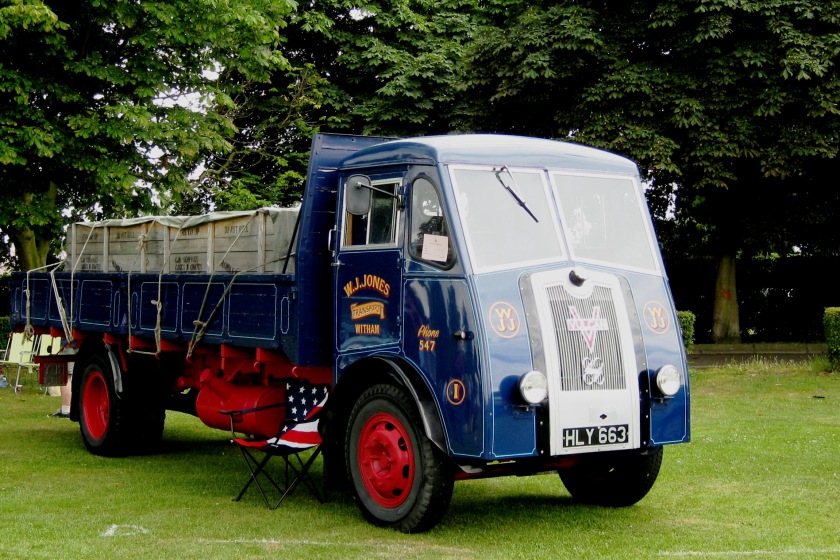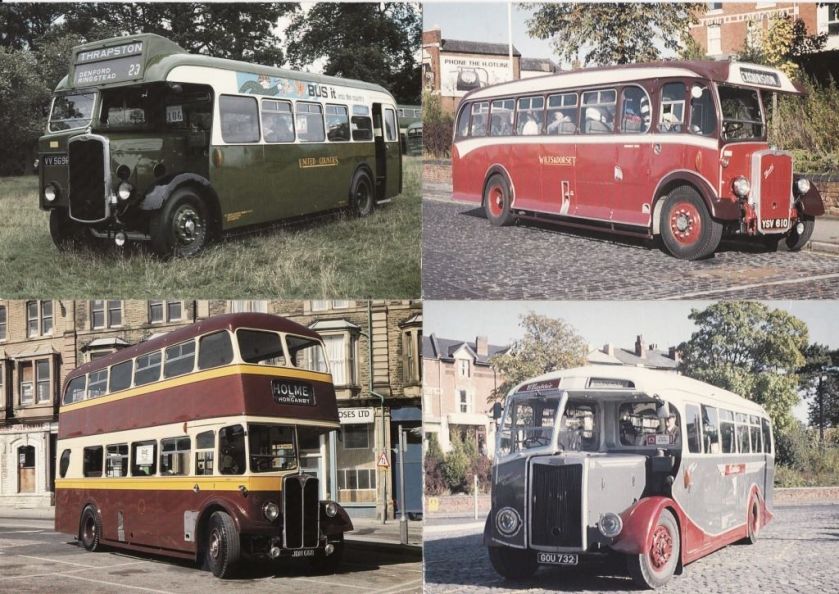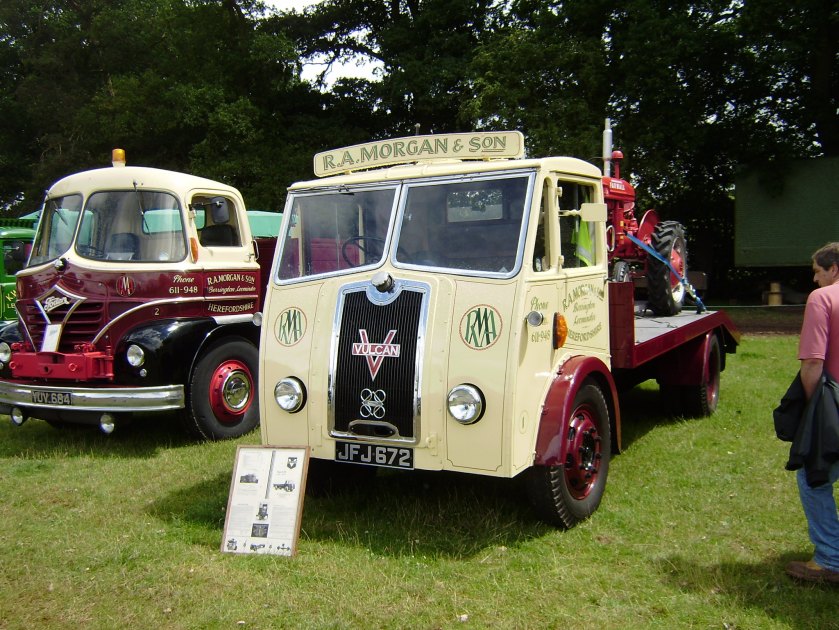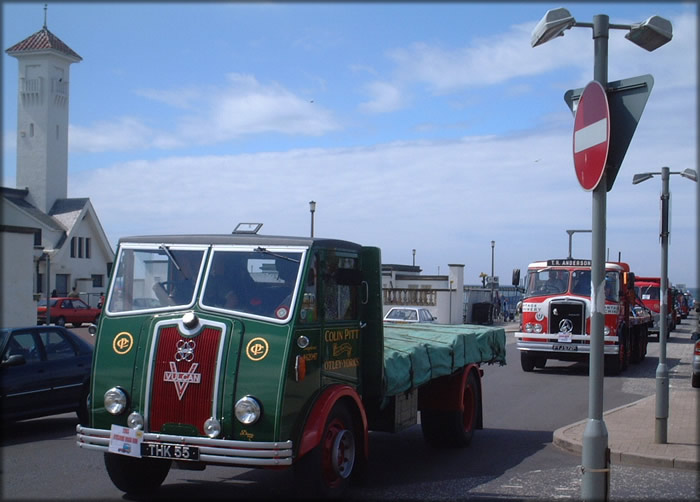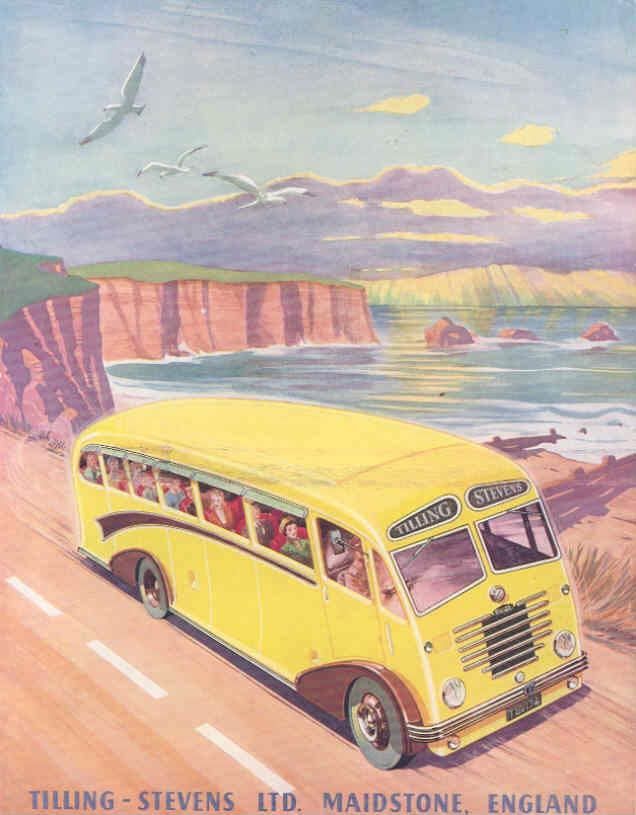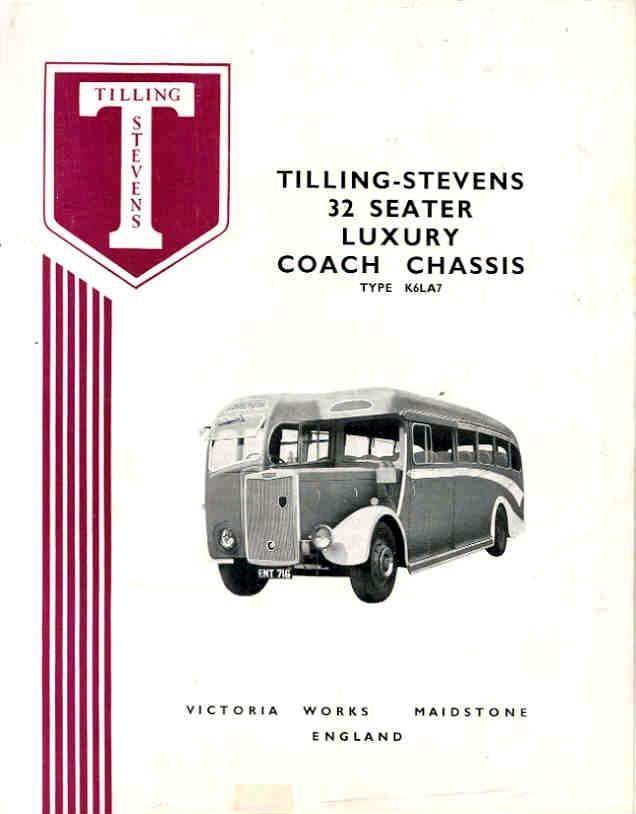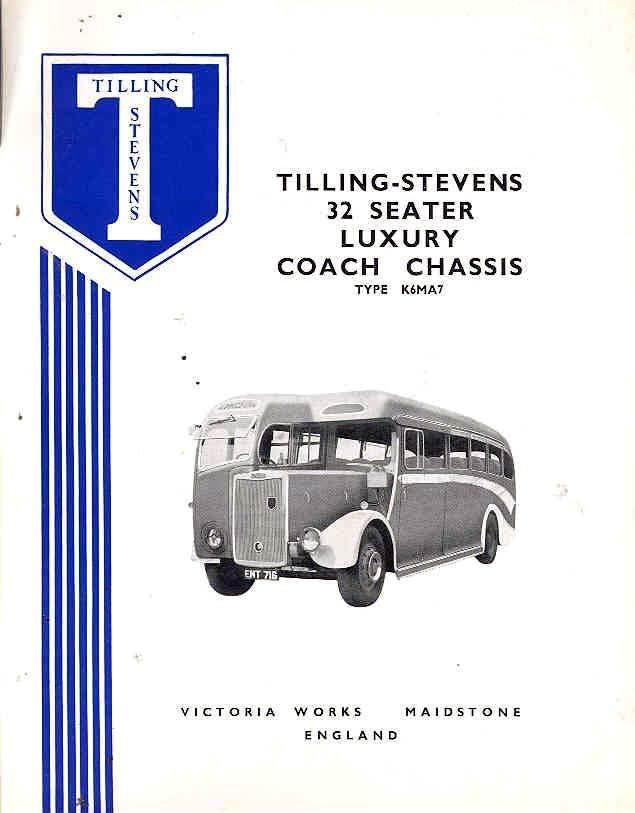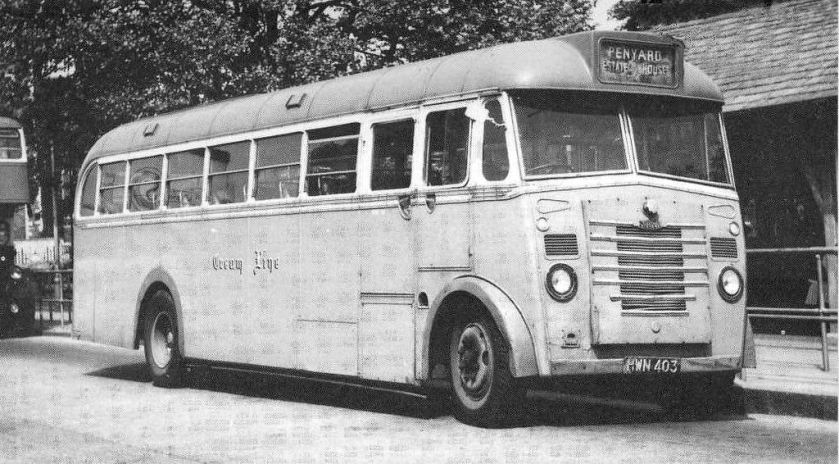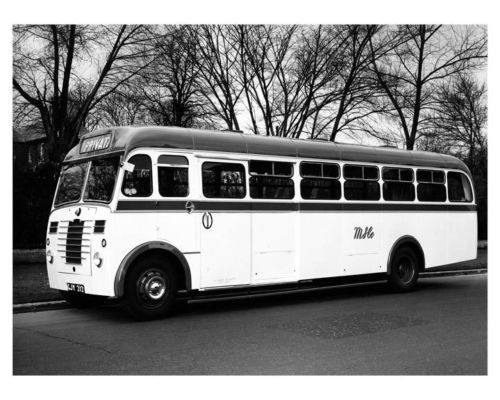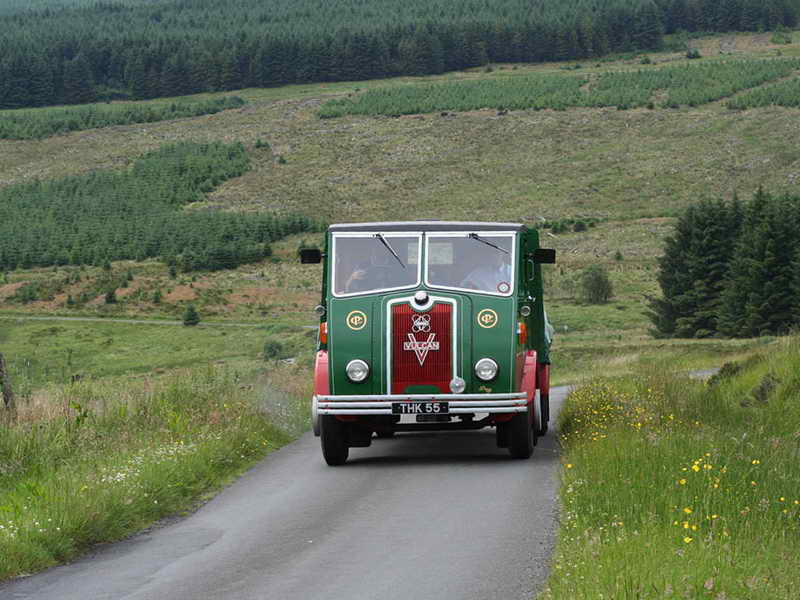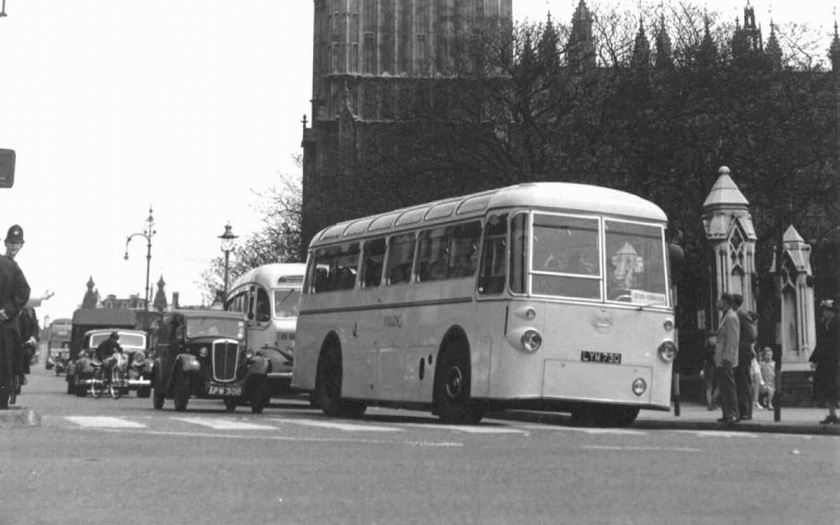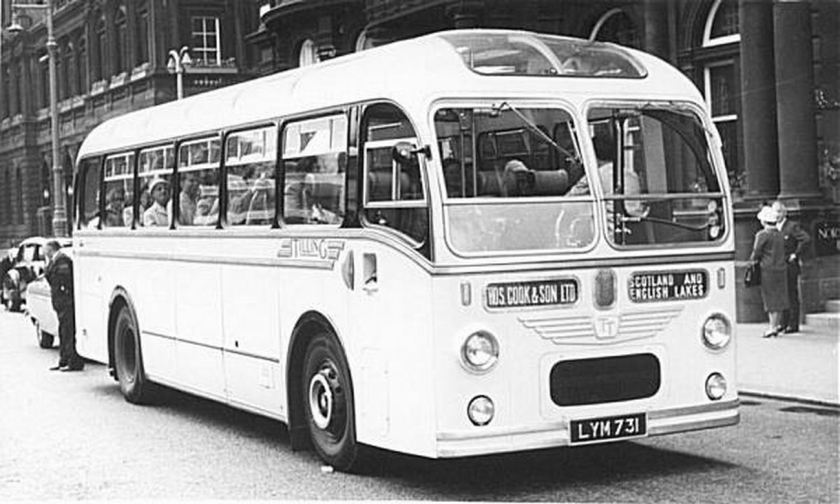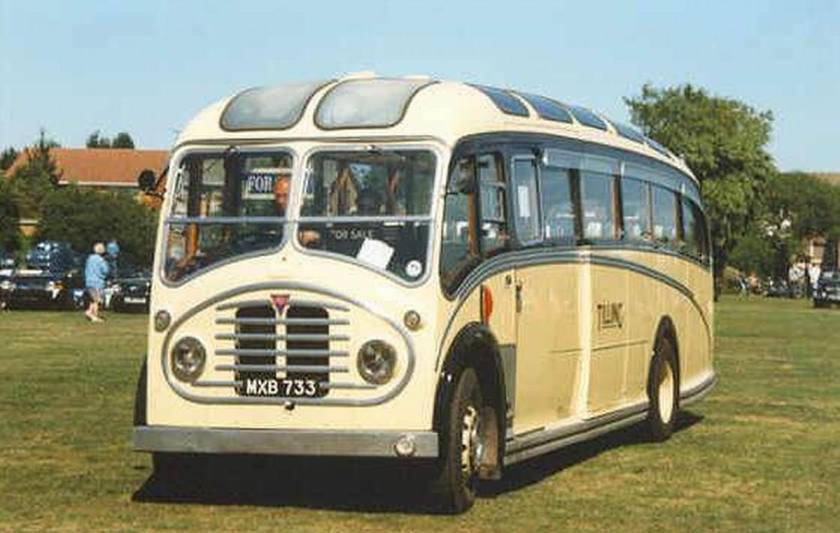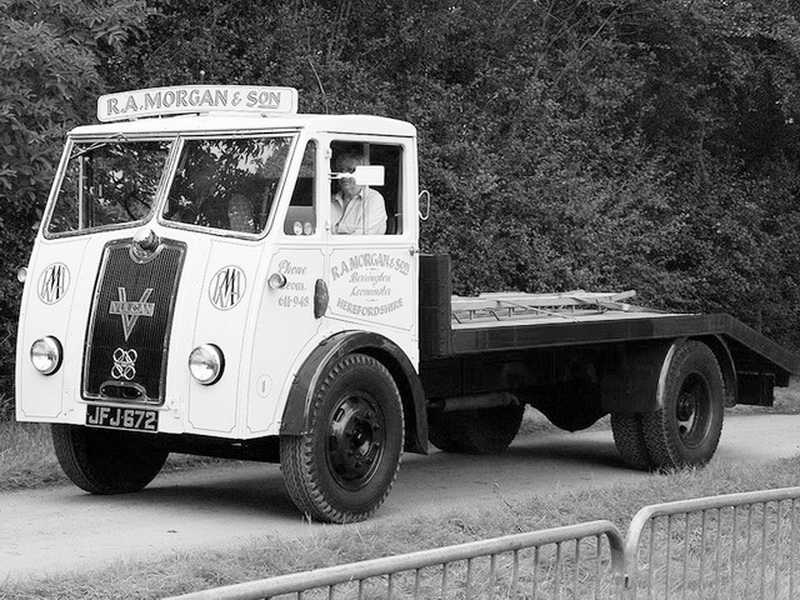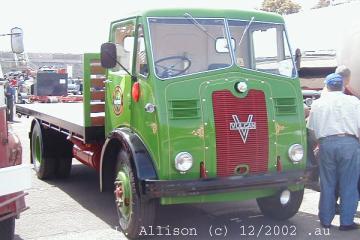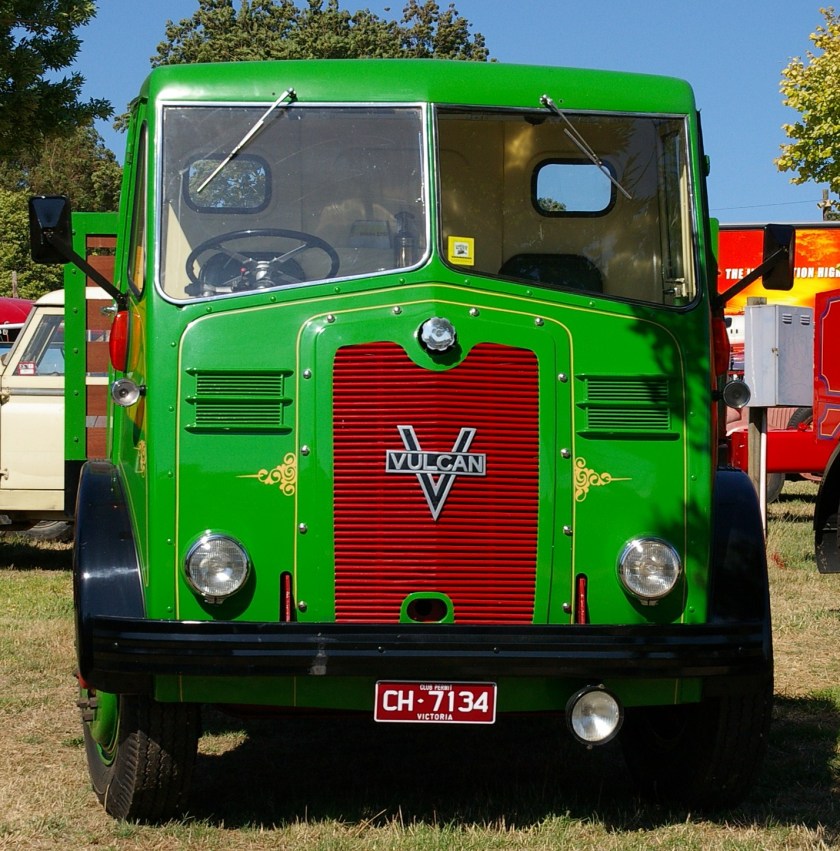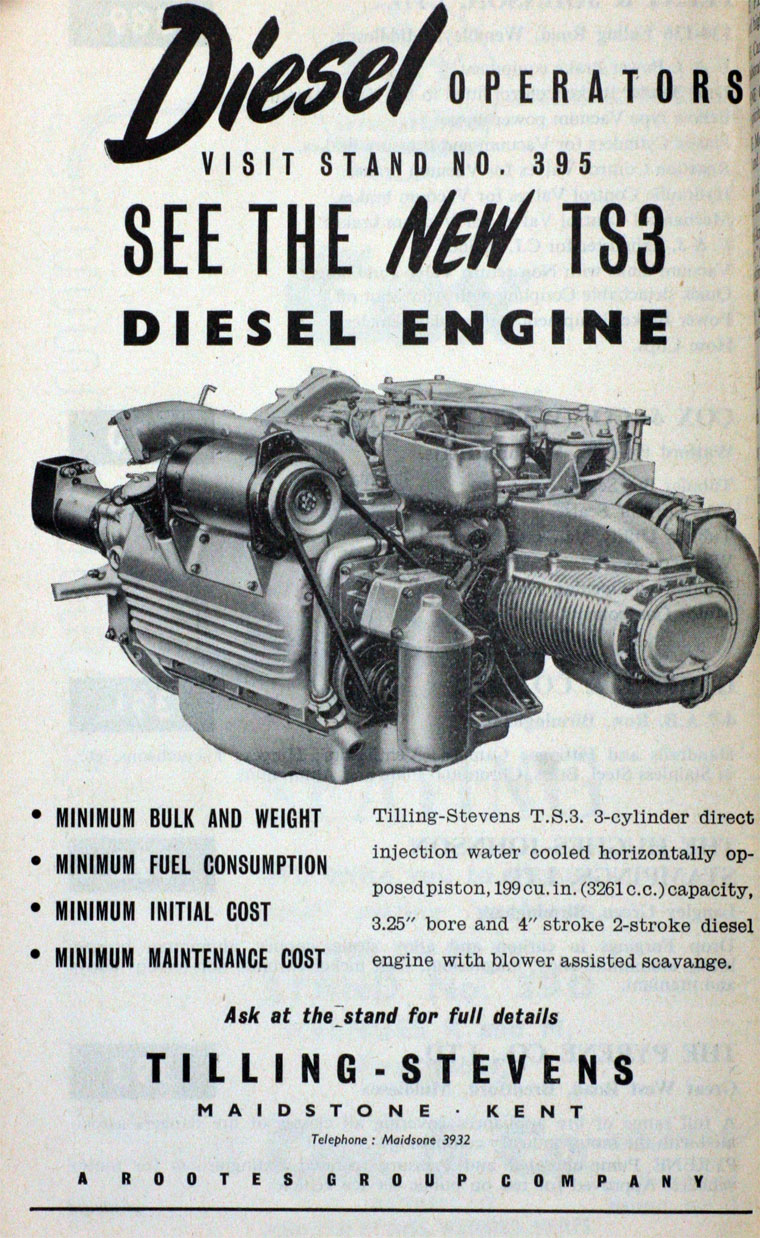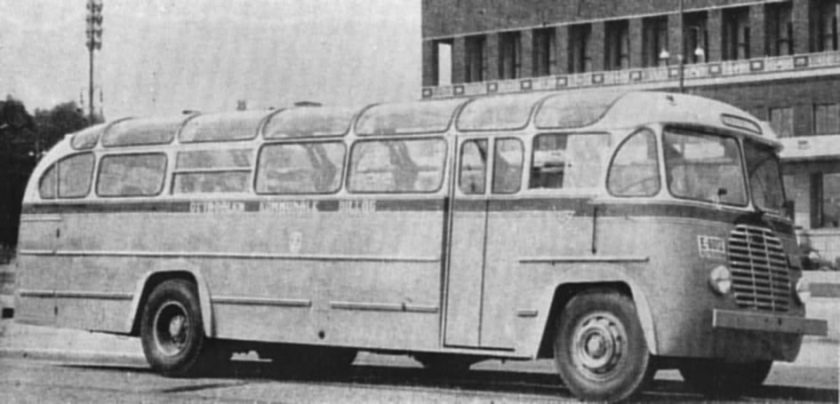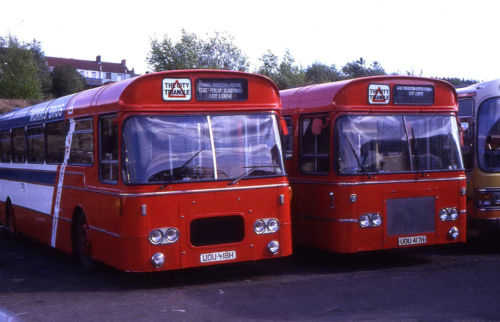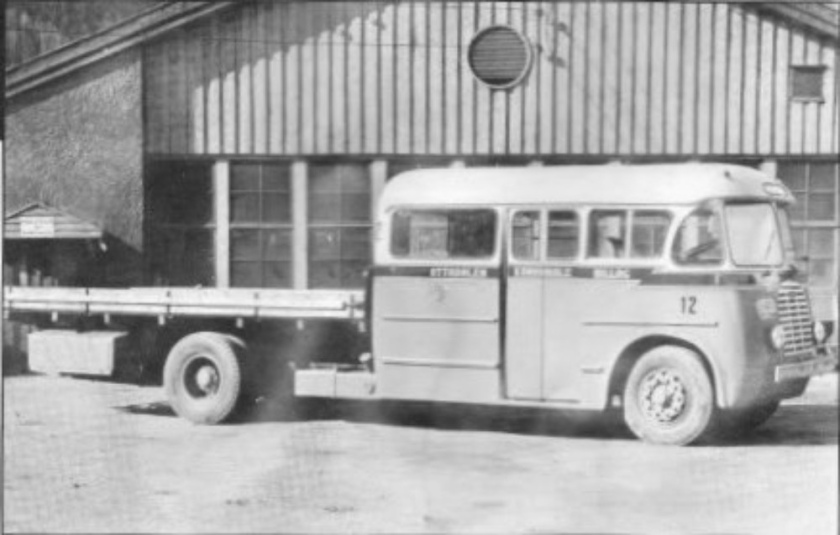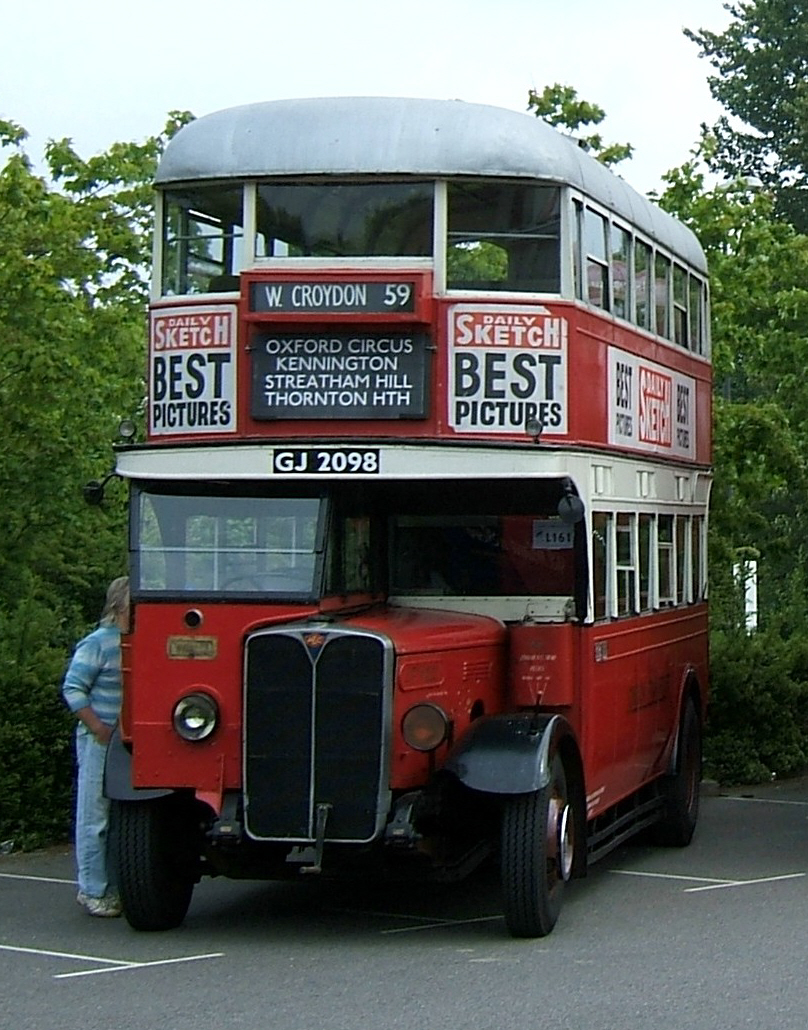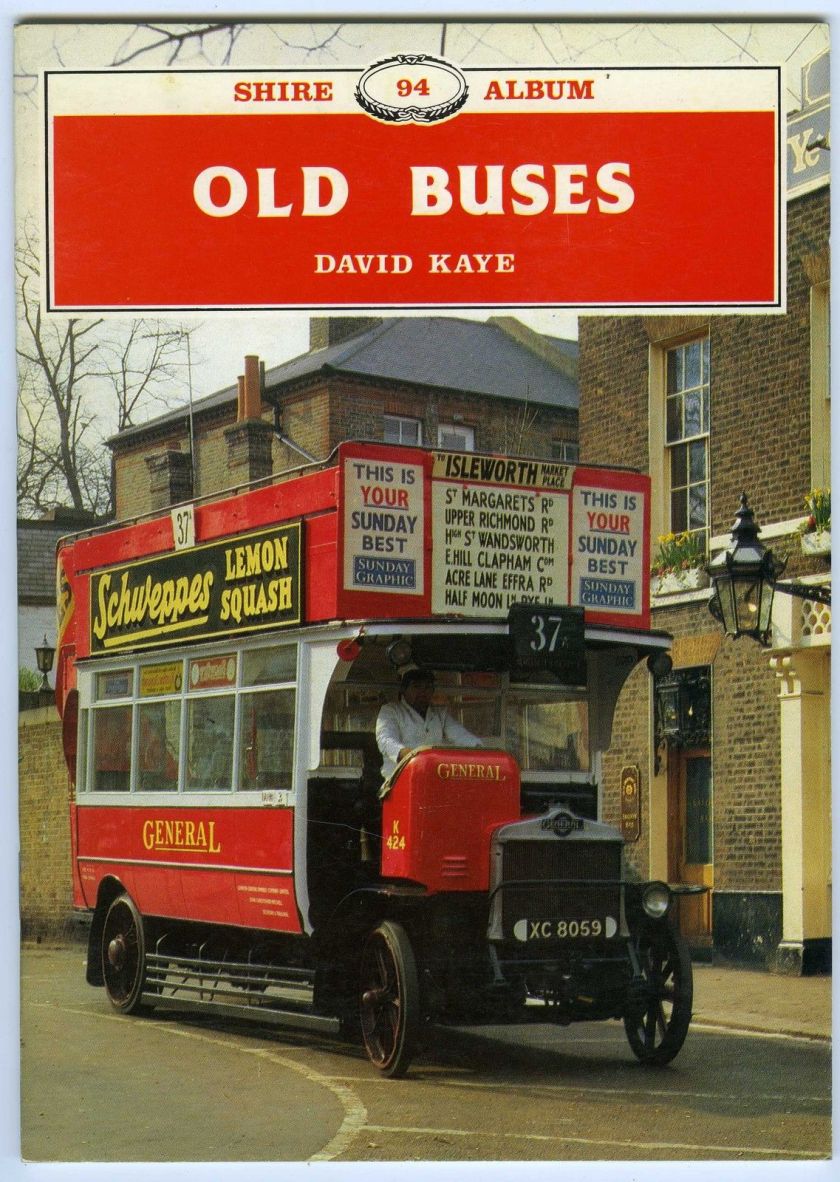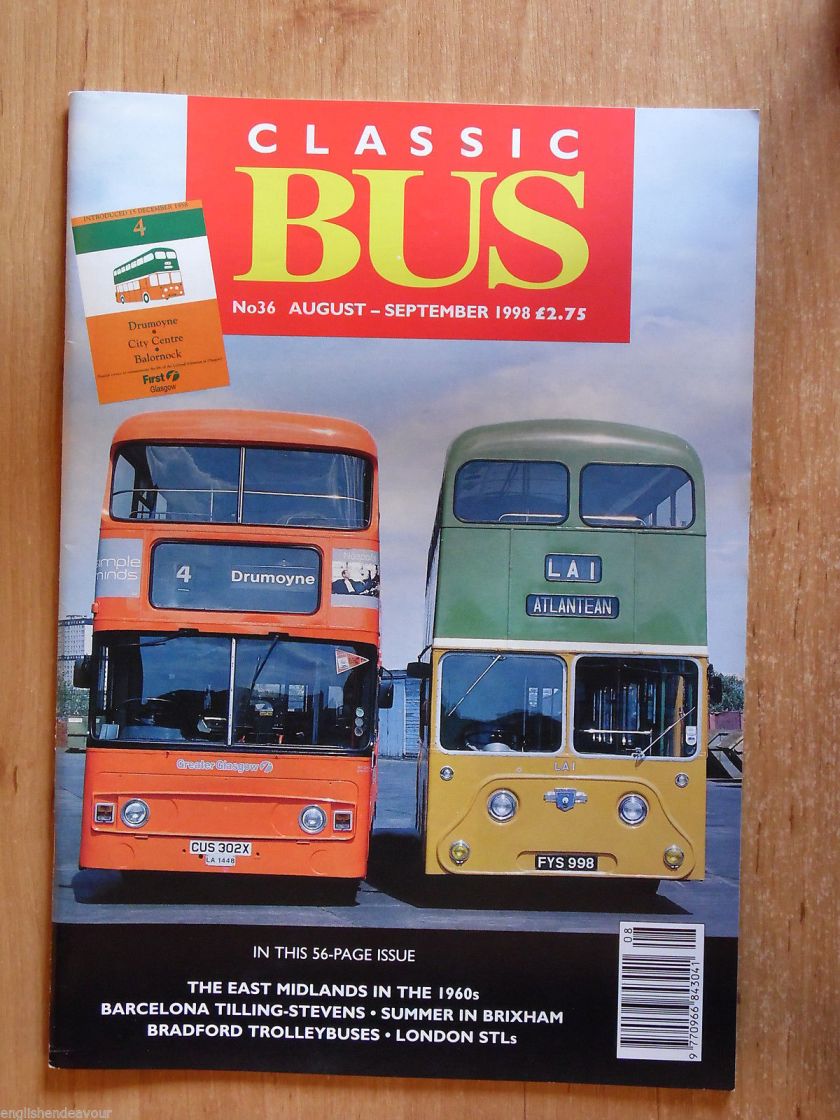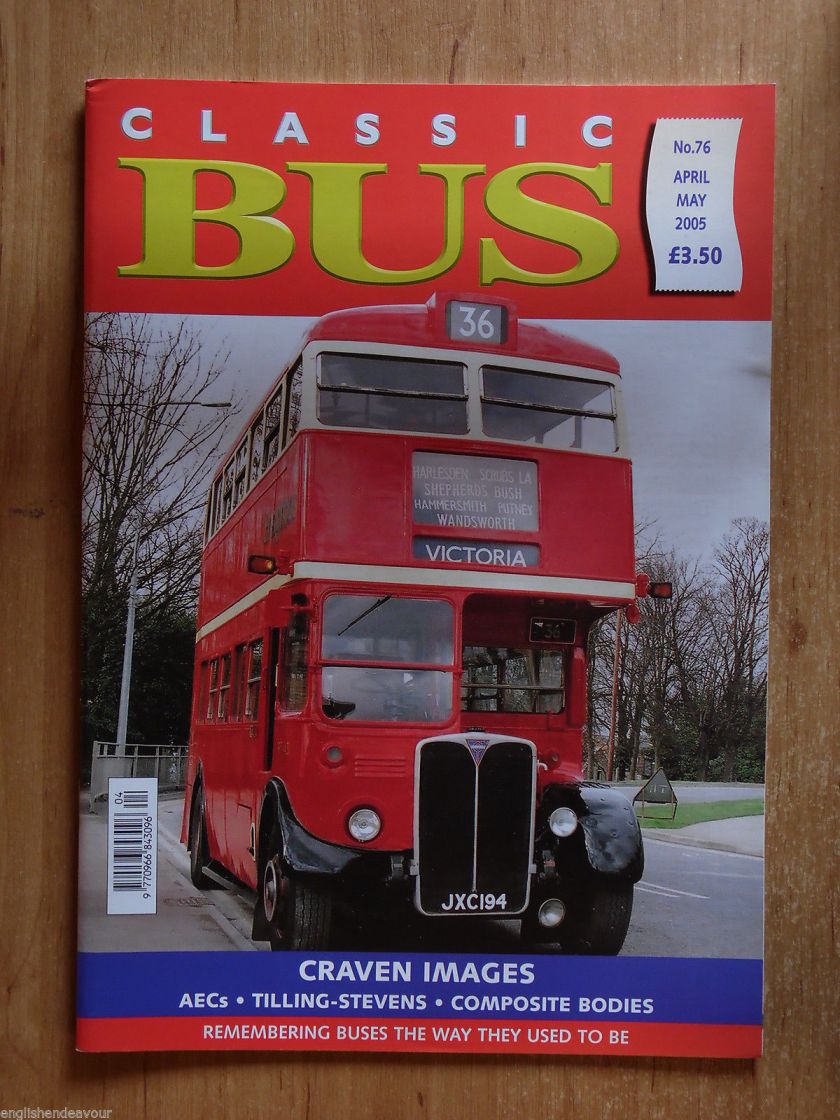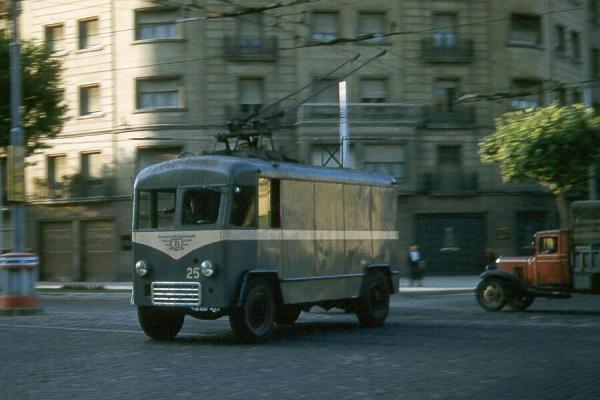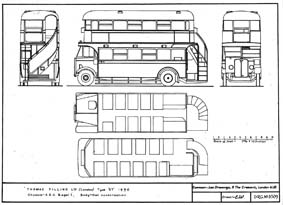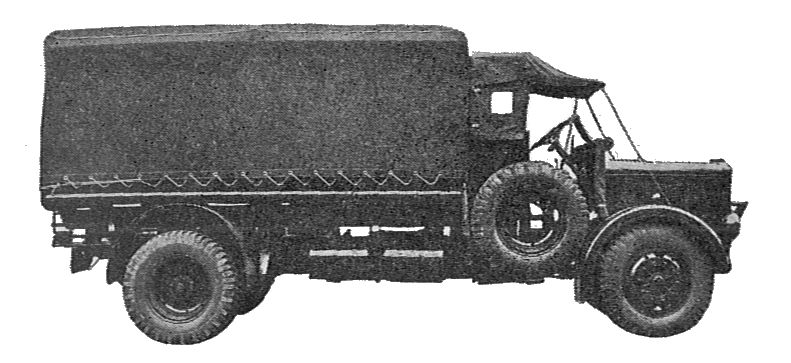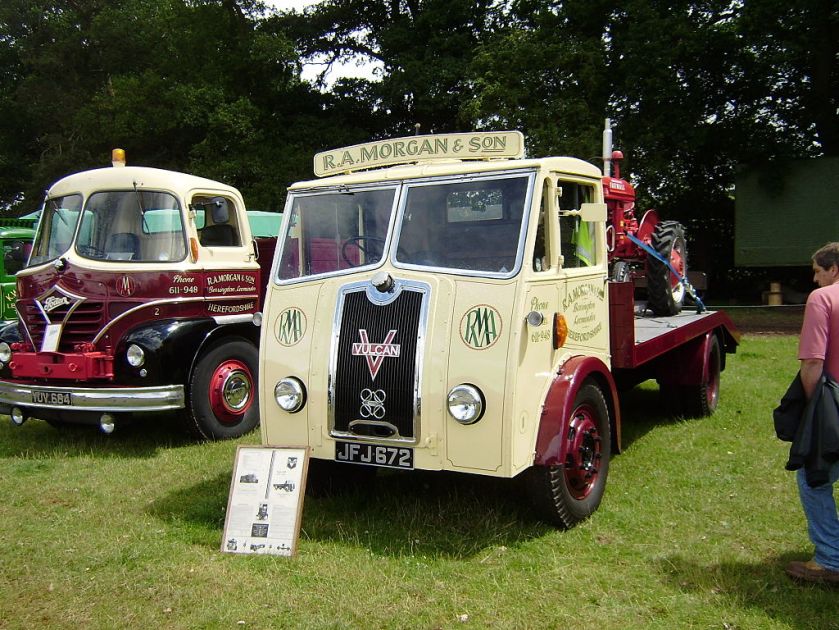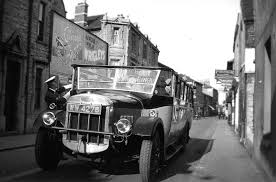Tilling-Stevens
and
VULCAN
since 1930
1907 ?
W.A. Stevens was established in Maidstone, Kent in 1897 by William Arthur Stevens and had by 1906 built its first petrol-electric vehicle using designs patented by Percival (Percy) Frost-Smith. A petrol engine was connected to an electrical generator and the current produced passed to a traction motor which drove the rear wheels. According to the website of the Birmingham and Midland Motor Omnibus Trust the simpler to operate petrol-electric transmission was popular among bus drivers rather than the conventional crash gearbox (in the days before synchromesh) as few bus staff had previously driven motor vehicles.
1908 X2 with the very ornate Tilling 34 seat open top body with Quorn station as the backdrop
Factory
Tilling-Stevens factory was situated in St Peter’s St, Maidstone. The factory buildings, built in the 1920s in the Daylight style, survive as of 2012. They were Listed as Grade II in July 2011. It is described as “one few buildings of this style not to have undergone significant alteration from the original”.
1909
Buses
The petrol-electric transmission was fitted to chassis built by J.E. Hall and Co, of Dartford, (who used the trade name “Hallford”, so these were known as “Hallford-Stevens”) and Dennis Bros, of Guildford (as “Dennis-Stevens”), until an arrangement was agreed with a large bus operator, Thomas Tilling, who wanted to produce their own vehicles which were named Tilling-Stevens. The ease of driving and soundness of construction of these vehicles soon led to the company supplying chassis to many bus operators in the UK, and several abroad as well.
1910
Tilling-Stevens Motors Ltd consolidated its position with bus operators in World War I because the petrol-electric chassis were not considered suitable by the Army for use in France. However, many men were trained to drive in the War on vehicles with conventional gearboxes which led to a decline in popularity of Tilling-Stevens’ system. By the 1930s, chassis were being produced with conventional petrol/diesel engines, gearboxes and transmission.
1911
Tilling-Stevens split from Thomas Tilling in 1930 and renamed itself T S Motors Ltd (TSM) in 1932, but were again renamed Tilling-Stevens before World War II had broken out.
1912
Tilling-Stevens was still manufacturing buses after World War II, with a large order built in 1947/1948 for export to Hong Kong (China Motor Bus (108) & Kowloon Motor Bus (50)).
Goods vehicles
Tilling-Stevens also produced goods chassis available with either petrol-electric or conventional gearbox transmissions and built many trucks during World War I. Their cast aluminium radiators were distinctive, with “Tilling-Stevens” cast into the top and either “Petrol-Electric” or “Maidstone” into the bottom tanks.
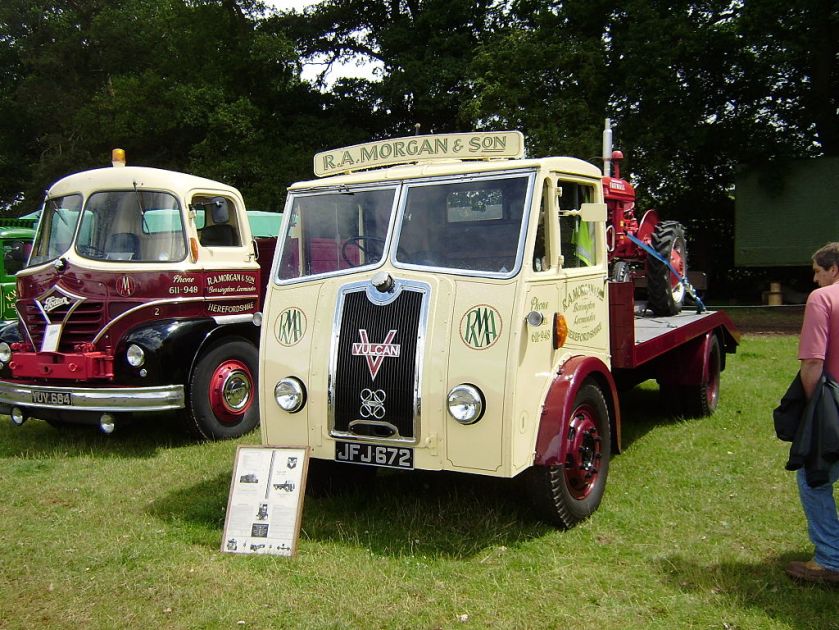 Post-war Vulcan truck fitted with Perkins diesel engine. On show at Bromyard, England in 2008
Post-war Vulcan truck fitted with Perkins diesel engine. On show at Bromyard, England in 2008
After the war, they failed to invest in updating their products and acquired Vulcan Trucks of Southport, Lancashire in 1930 to extend their range (and use Vulcan petrol engines). Production stayed at Maidstone.
The unusual electric transmission became less of an advantage as other makers developed their simpler mechanical transmissions to be reliable and easier to drive. Tilling-Stevens specialised in some unusual markets where the transmission could offer a particular advantage, by also using it as a generator. Some early turntable ladder fire engines were produced where arc lamps for lighting and the electric motors to raise the ladder could be powered by it.
1913
In the 1930s the lorries also lost the large cast radiators in favour of first a thinner cast aluminium shell and then a cheaper steel pressed bonnet and a small diamond-shaped “TSM” badge.
1914
Leading up to World War II they specialised in the searchlight trucks for which they are probably still best known today.
1914 Bus Postcard – B.C.T. 1914 Tilling Stevens – Petrol-Electric Bus U130
Rootes Group
In 1950, the company was sold to Rootes Group, and complete vehicle production ceased soon afterwards. The plant continued to produce light commercial engines (particularly the iconic Commer TS3 2 stroke diesel) and vehicle bodies, before finally closing in the 1970s, some years after the group had been acquired by Chrysler.
1918
Legacy
The Tilling-Stevens petrol-electric bus is interesting as an early example of a hybrid vehicle, although without any direct engine propulsion or battery storage. As the petrol engine ran continuously, it was almost certainly less fuel efficient than a competing petrol engine, which may have contributed to its demise. However hybrid petrol-electric cars, such as the Toyota Prius, are now seen as being a partial solution towards cutting carbon dioxide emissions and reducing the risks of damaging global warming.
1919 Tilling Stevens bus in Amberley
References
- Jump up^ The Transport Museum, Wythall – Midland Red/Birmingham City Transport O 9926
- ^ Jump up to:a b “Saved in the nick of time!”. Kent Messenger (9 March 2012). p. 12.
- Jump up^ “1924 Tilling-Stevens TS3A petrol-electric lorry”.
- Jump up^ “Tilling-Stevens fire engine in New Zealand.”.
- Jump up^ “Tilling Stevens TS20 searchlight lorry”.
